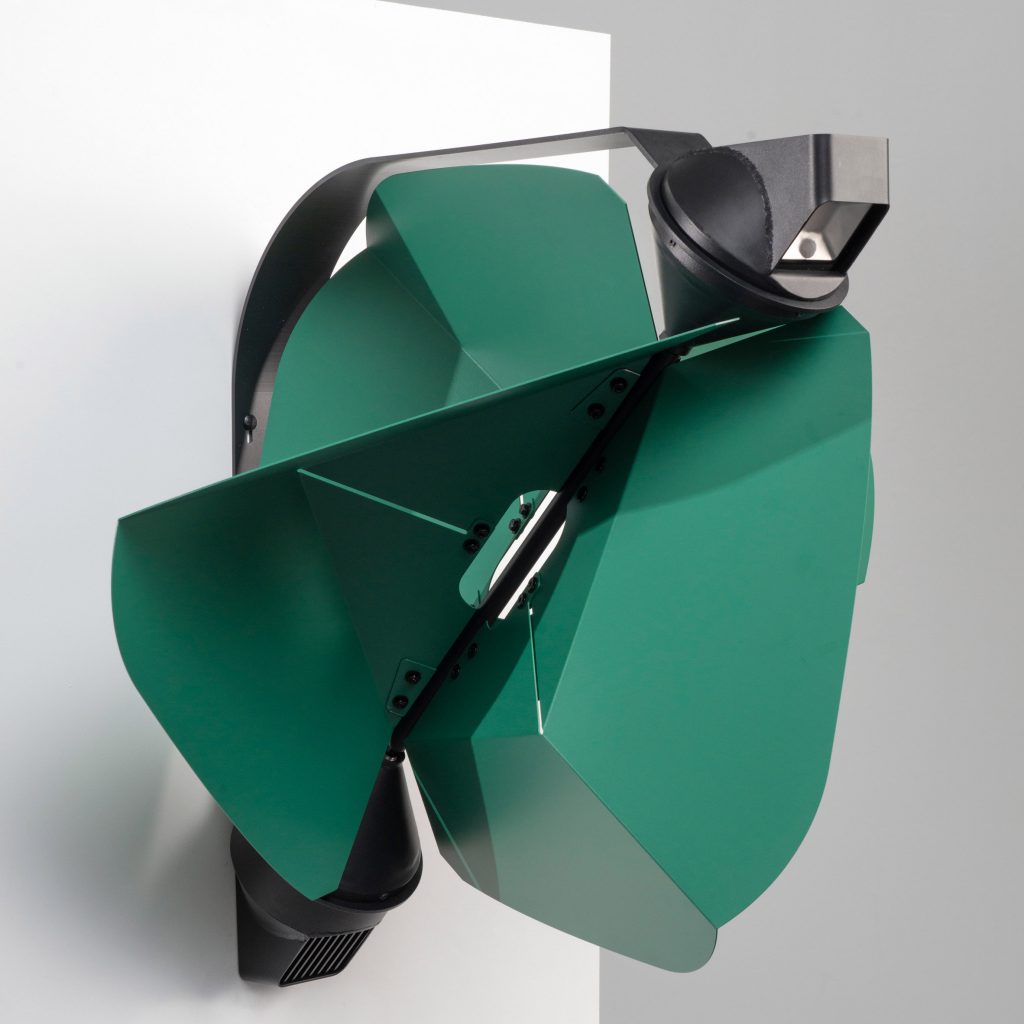Solar Greenhouse is a prototype for "zero kilometre" food production and energy generation
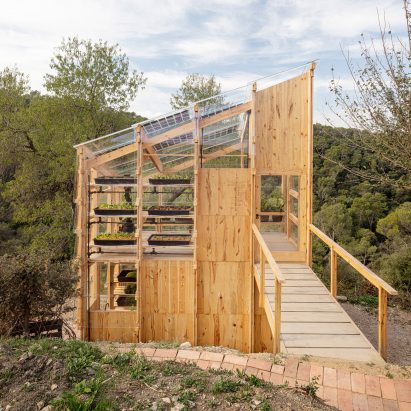
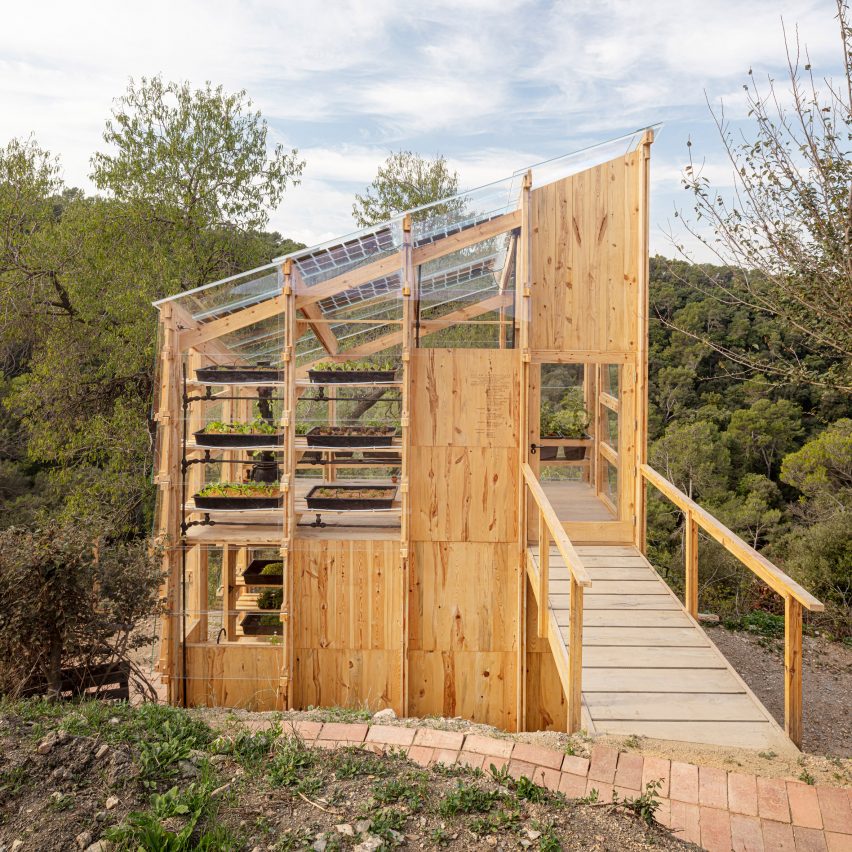
A team of students and researchers at the Institute for Advanced Architecture of Catalonia (IAAC) has designed a prototype Solar Greenhouse for energy generation and food production with a "zero kilometre" philosophy.
The timber structure, constructed in Barcelona's Serra de Collserola Natural Park, is intended to demonstrate how our most basic needs could be met in a more ecological way, in response to the EU's aims to be net-zero by 2050.
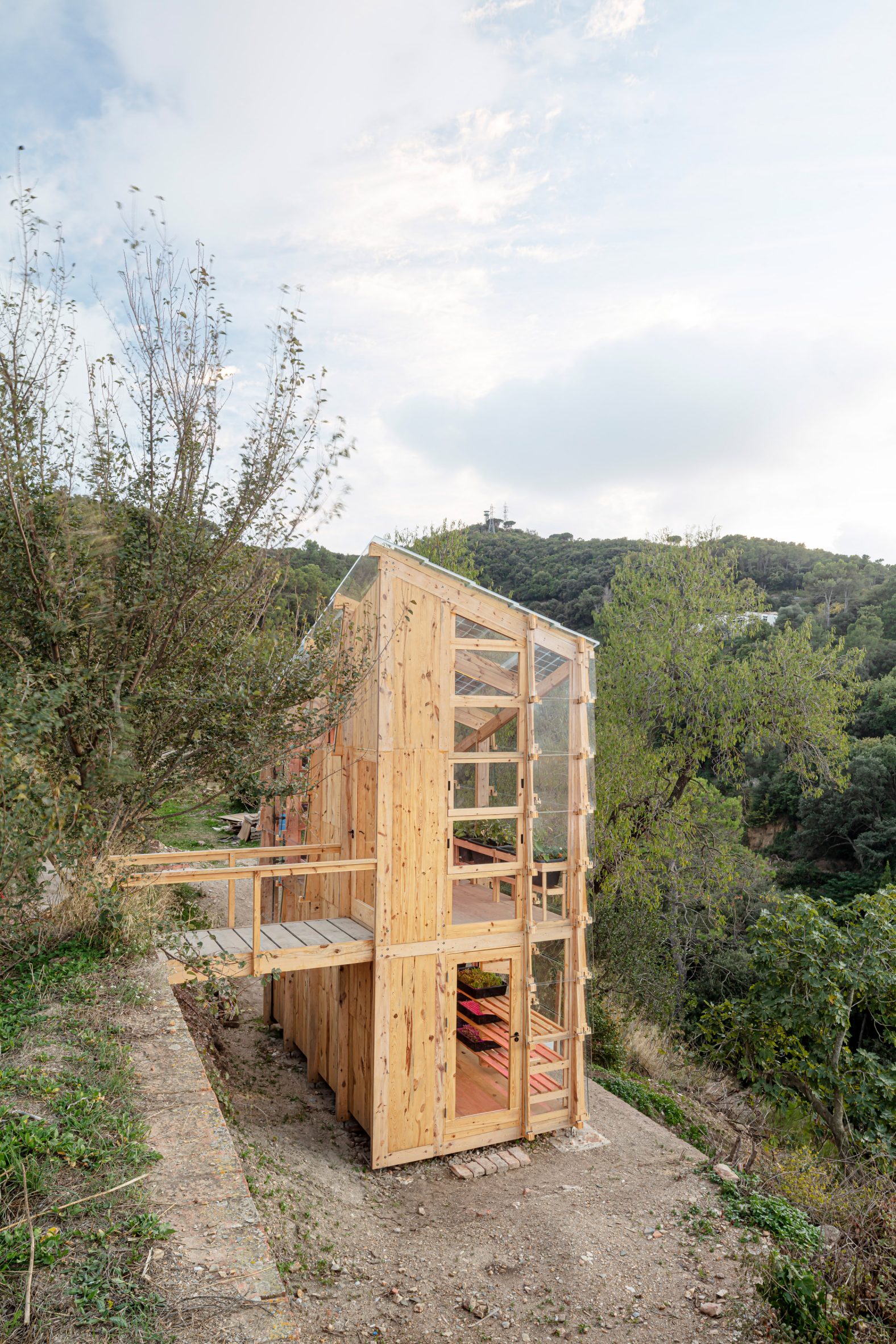 Solar Greenhouse is an energy and food production prototype that was designed by students and researchers at IAAC
Solar Greenhouse is an energy and food production prototype that was designed by students and researchers at IAAC
Led by Vicente Guallard and Daniel Ibañez, directors of the Masters programme in Advanced Ecological Buildings and Biocities, the students worked with a variety of experts in cultivation, energy and water.
While the prototype sits in a natural landscape, it is intended it to be scalable and adaptable to a variety of settings, such as on the rooftops of inner-city buildings.
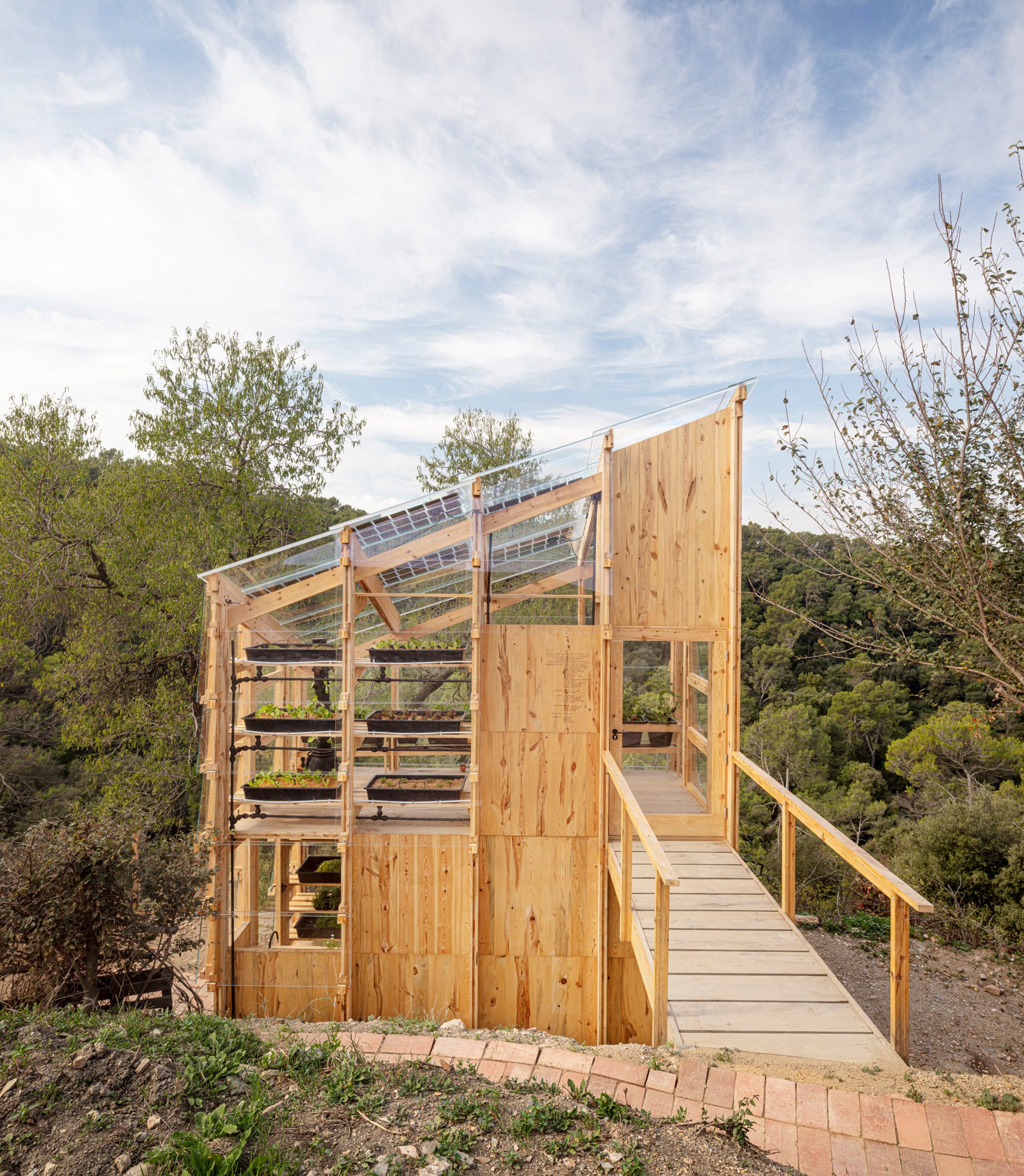 It was constructed using timber
It was constructed using timber
"The aim was to design and build a system that could be replicated in both rural and urban areas," said the designers.
"[It] represents the next step towards a more ecological agricultural transformation and progress in tackling food and energy poverty," they continued.
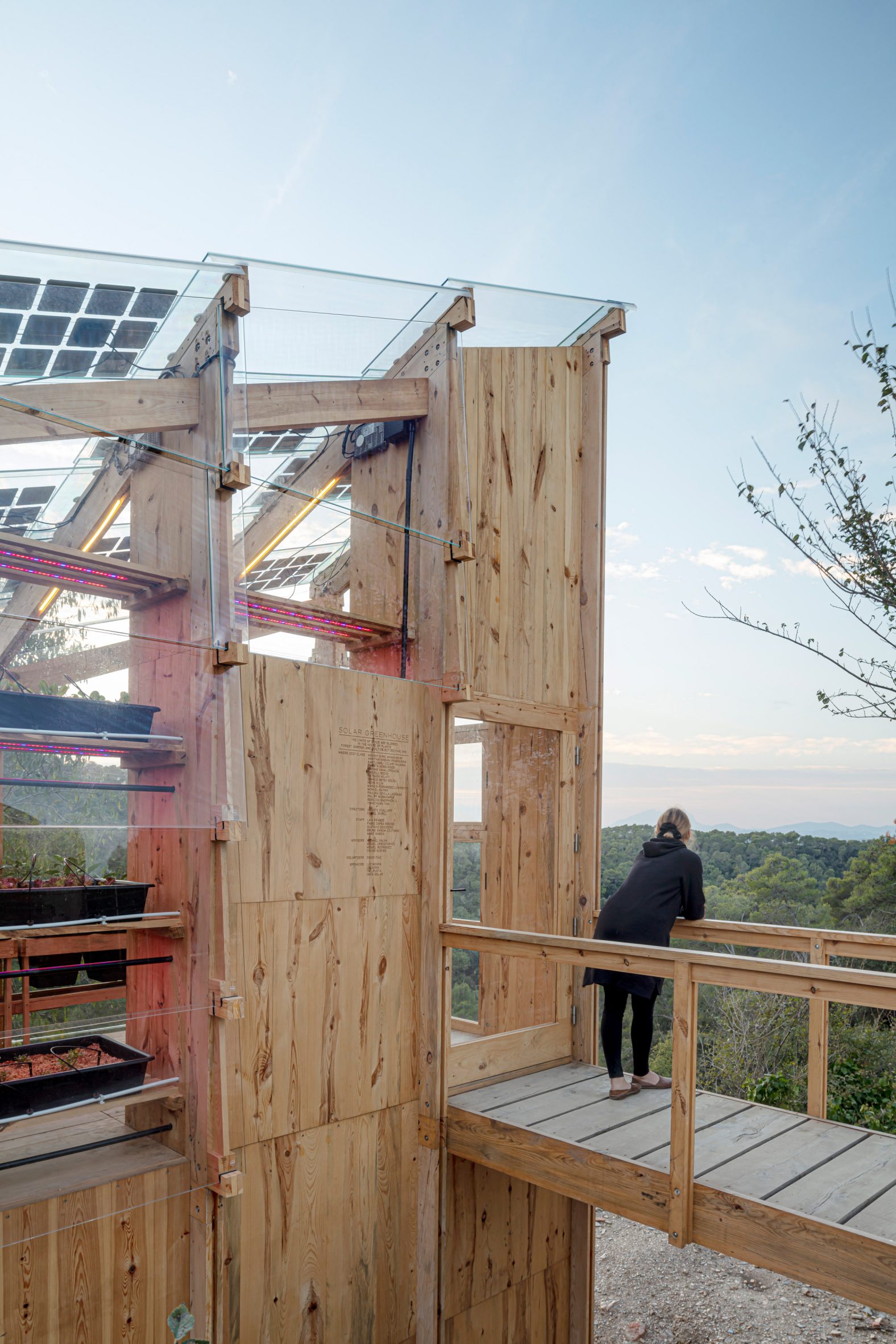 The structure comprises two levels and features solar panels on its roof
The structure comprises two levels and features solar panels on its roof
The greenhouse is a simple, timber-framed structure with two levels, topped by glass panels and solar panels and wrapped in glass louvres that provide light and ventilation.
Germination takes place on the greenhouse's lower level, while the upper level contains cultivation spaces, with a glass, diamond-shaped roof maximising its exposure to sunlight.
[ 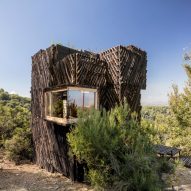
Read:
The Voxel is a "quarantine cabin" made entirely from locally sourced materials
](https://www.dezeen.com/2021/04/14/the-voxel-quarantine-cabin-iaac/)
A network of pipes carrying nutrients and lighting for growth cycles is integrated into the structure. Hydroponics allow for plants to be grown without agricultural soil and LED strip lighting aids growth cycles.
The "zero kilometre" concept is normally used to describe food that is produced and eaten locally, and thus has travelled zero kilometres.
Here, the philosophy was applied not only to the greenhouse's food production but also its construction, with materials being locally and sustainable sourced.
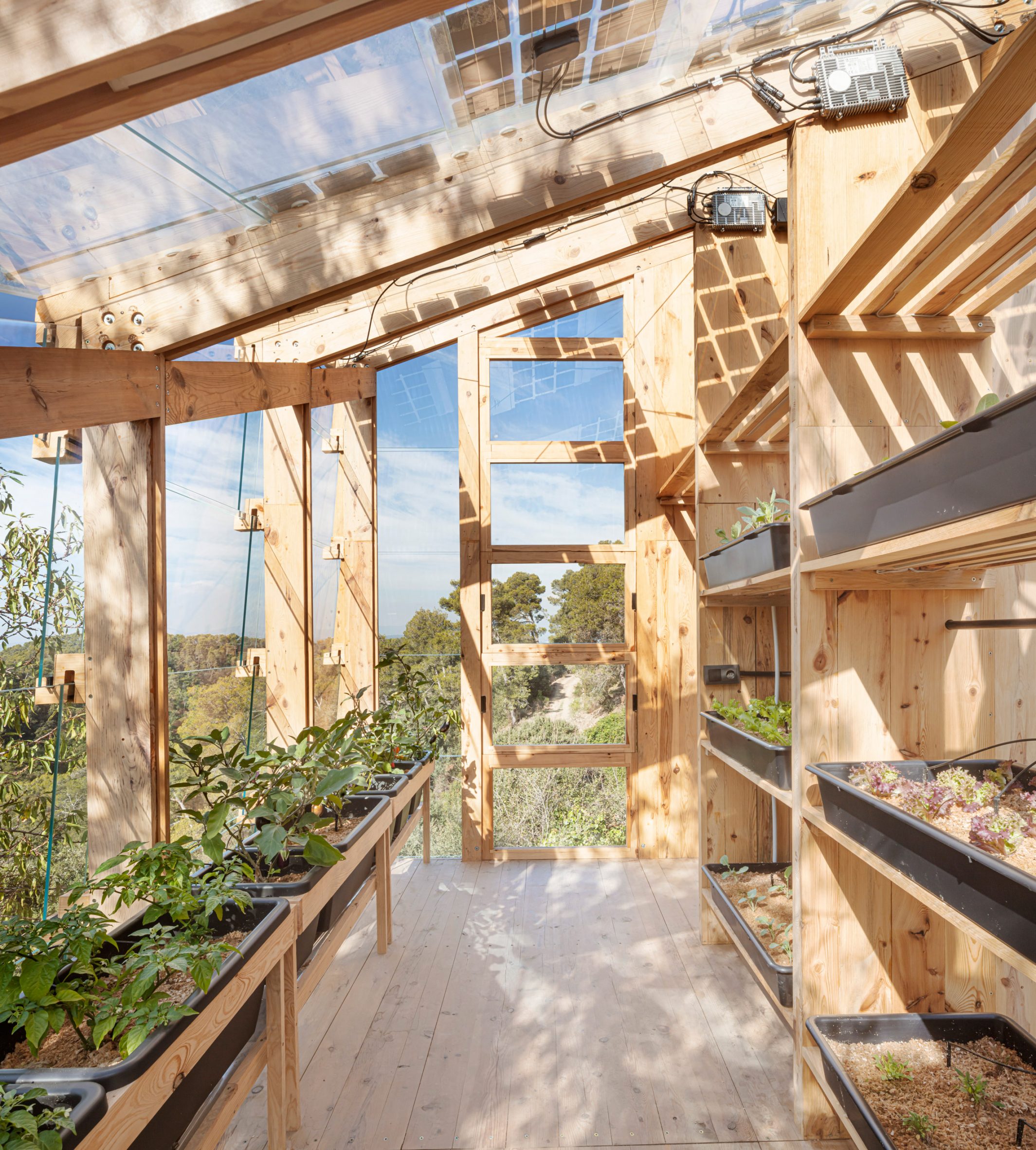 The prototype will be used to grow plants without soil
The prototype will be used to grow plants without soil
The pine for the timber was processed in the IAAC's nearby Vallduara Labs, and the substrate materials in the planting beds consists of recycled sawdust — a waste product of the Green Fab Lab also on the university campus.
"The water, substrate and building materials are obtained from the surroundings, allowing the food grown to jump directly from production to consumption, without the need of a supply chain," explained the designers.
"The ultimate goal is for the knowledge and the locally achieved systems to be applied at a global scale and, in this respect, the Solar Greenhouse is a valuable step forward," they continued.
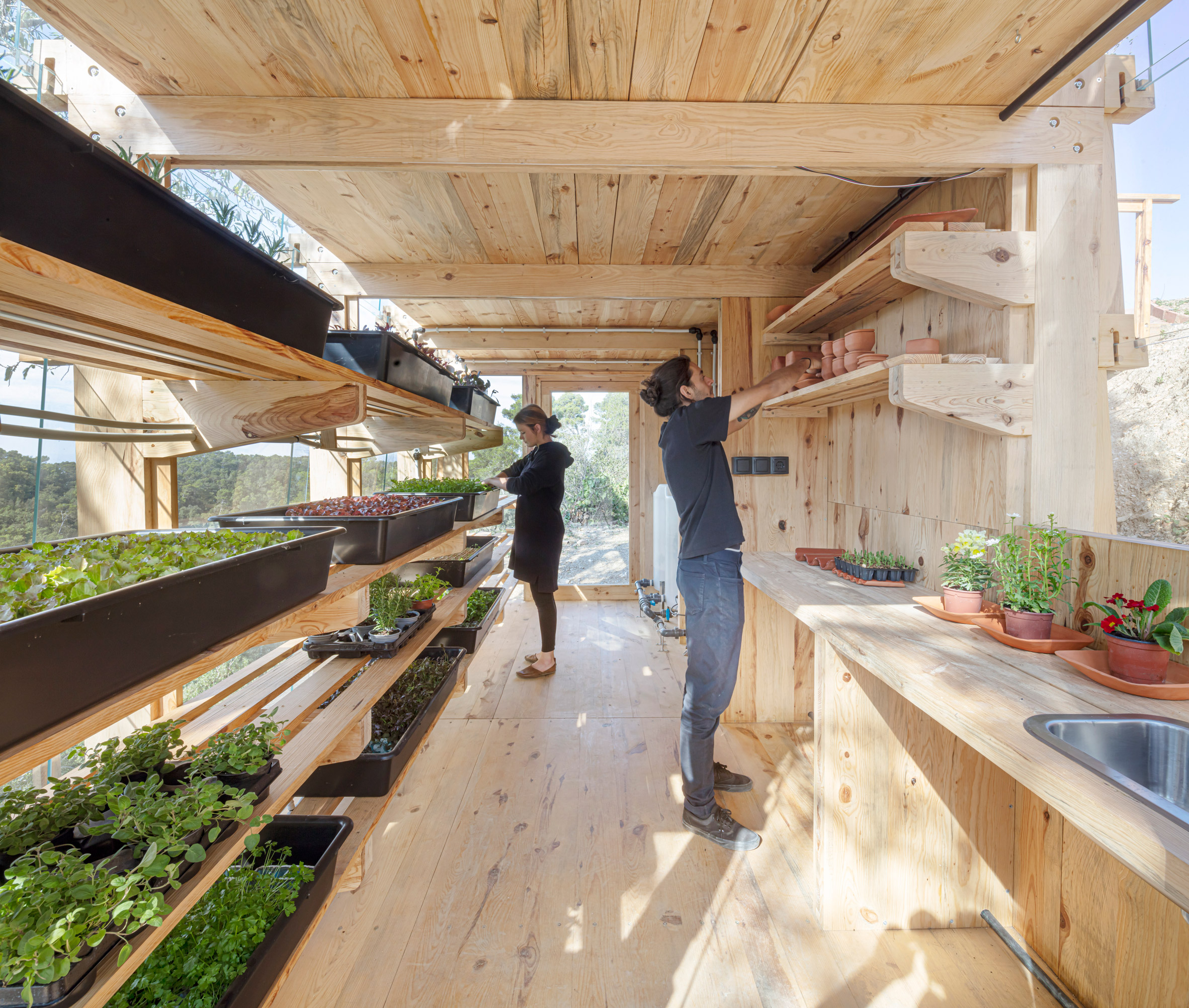 Materials used in the construction were sustainably sourced
Materials used in the construction were sustainably sourced
Students from IAAC also designed and built a cabin for self-isolation using wood harvested from within one kilometre of the site.
In Belgium, Meta Architectuurbureau and Van Bergen Kolpa Architecten recently completed a greenhouse in Belgium atop an agricultural market to create an urban food production centre.
The photography is byAdrià Goula.
The post Solar Greenhouse is a prototype for "zero kilometre" food production and energy generation appeared first on Dezeen.
#all #architecture #sustainabledesign #spain #barcelona #instituteforadvancedarchitectureofcatalonia #sustainablearchitecture
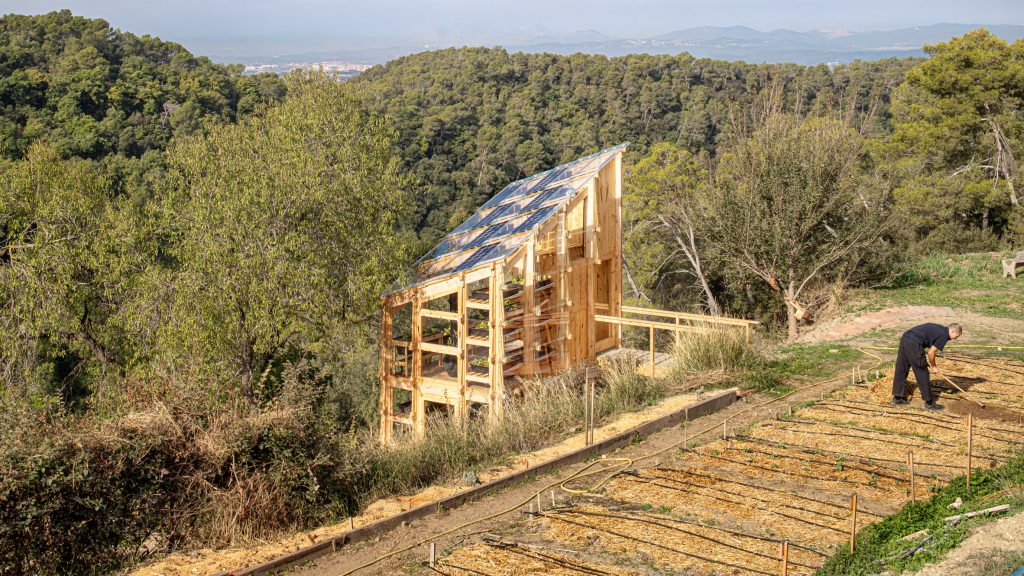
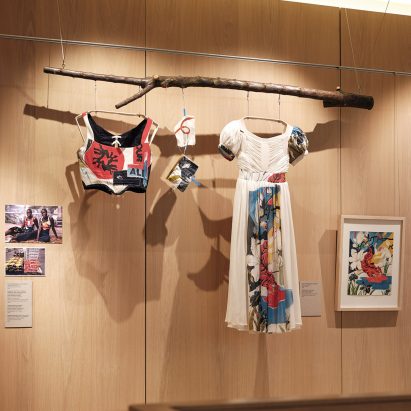
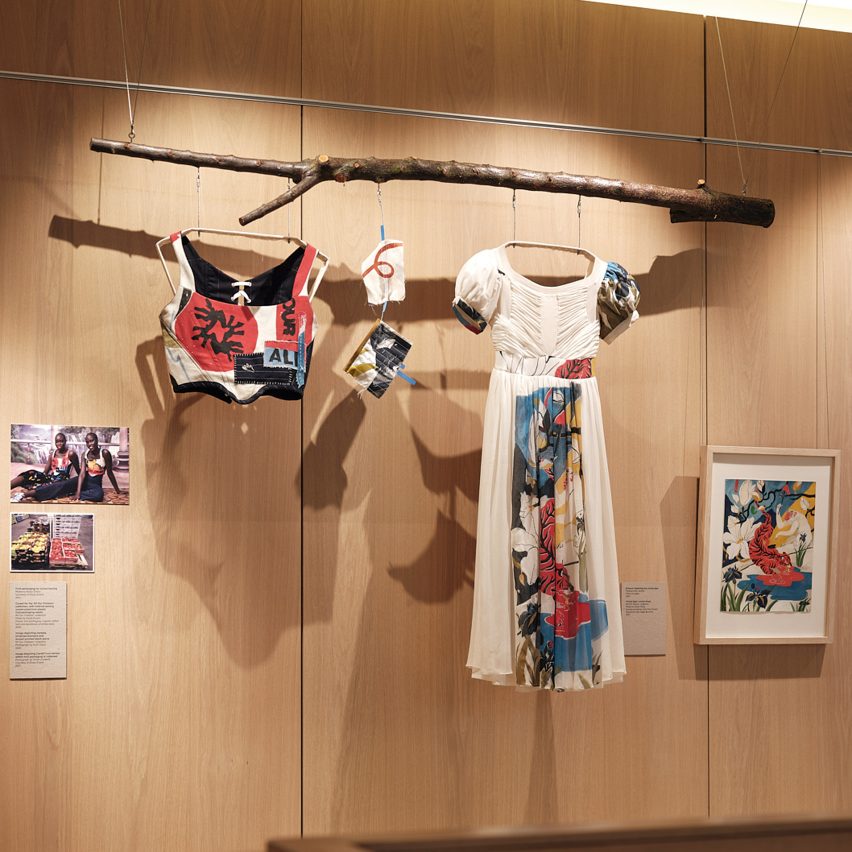
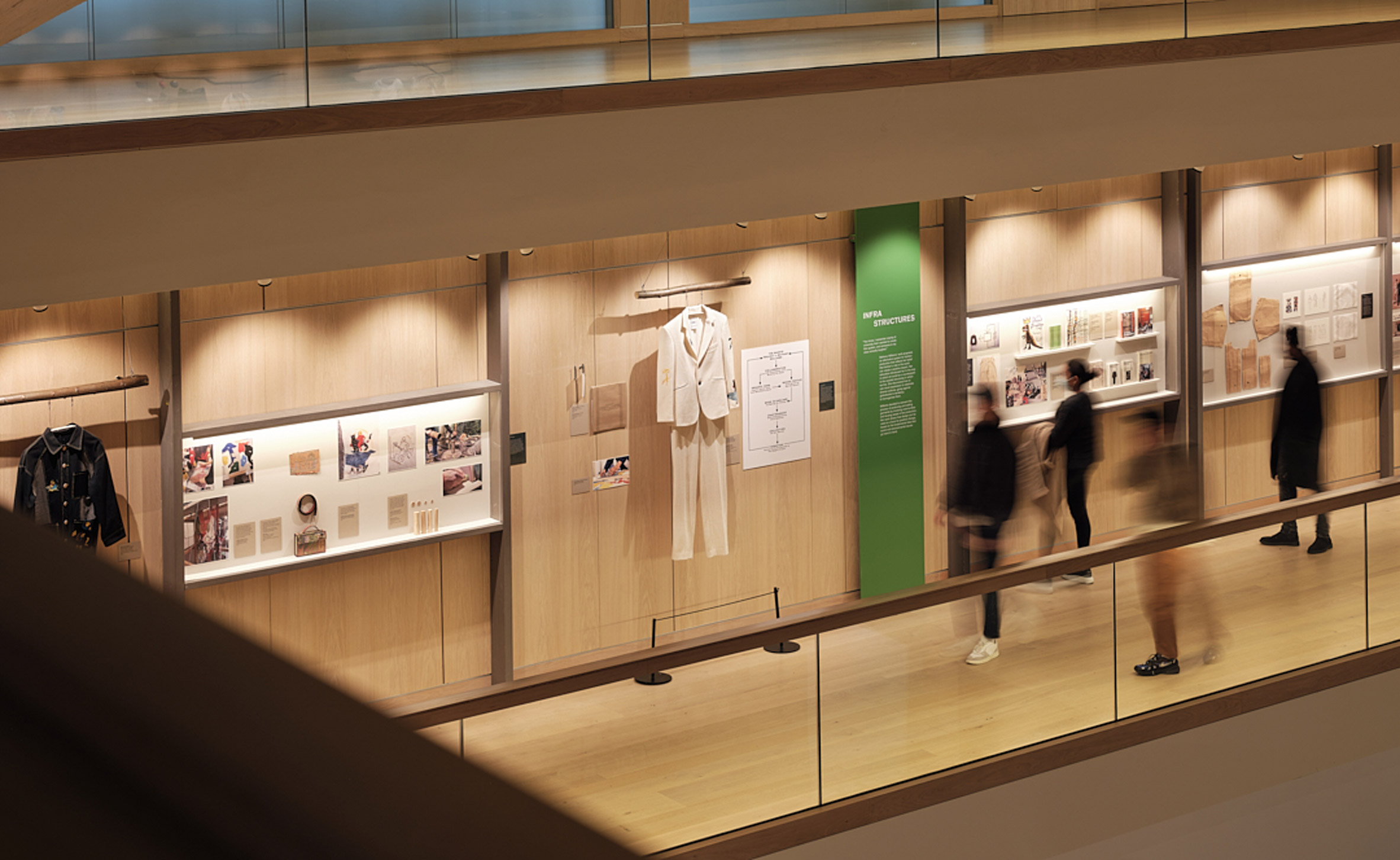 Bethany Williams: Alternative Systems is a free display in the atrium of the Design Museum
Bethany Williams: Alternative Systems is a free display in the atrium of the Design Museum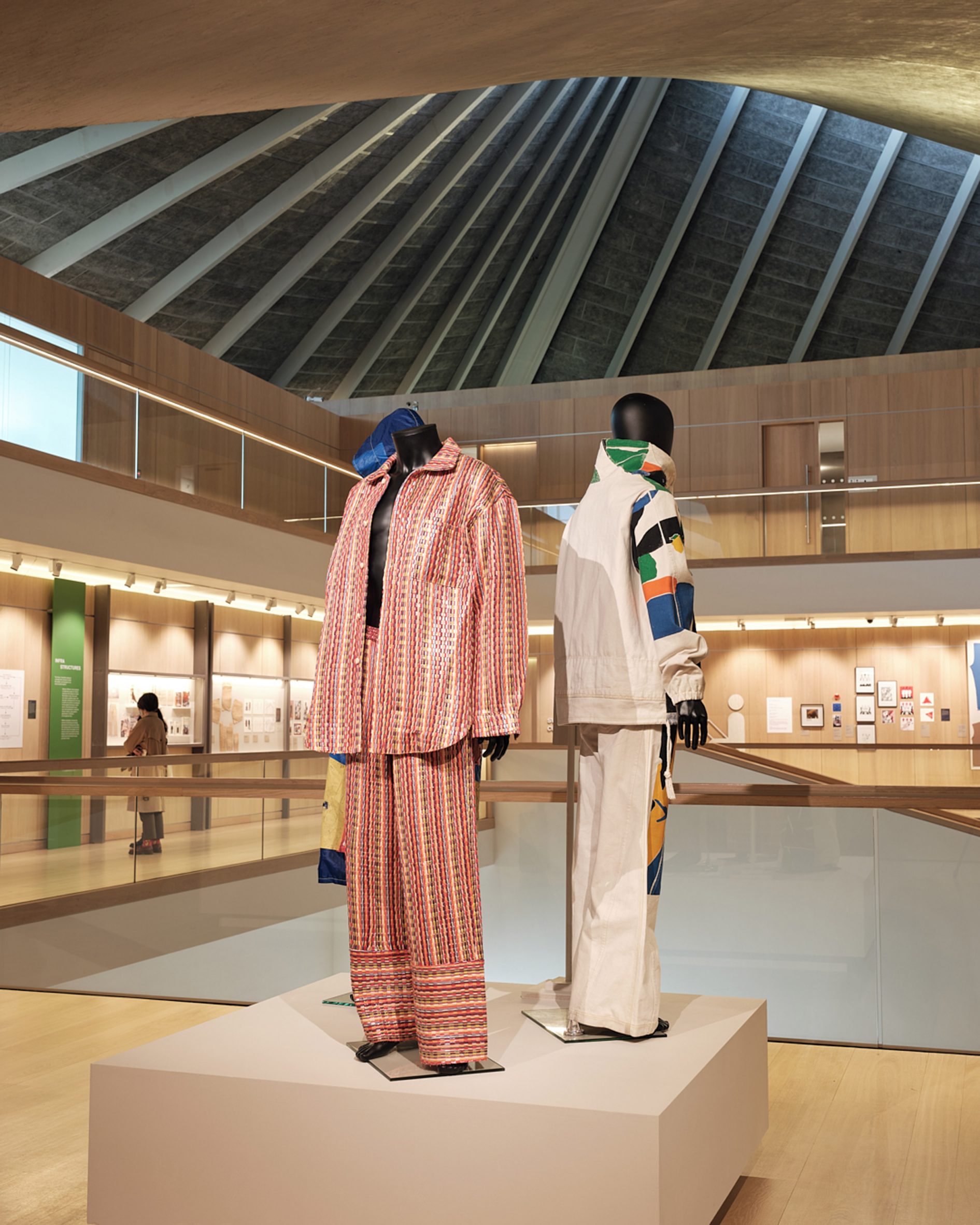 The display was chosen to be shown in a free entry space in the museum
The display was chosen to be shown in a free entry space in the museum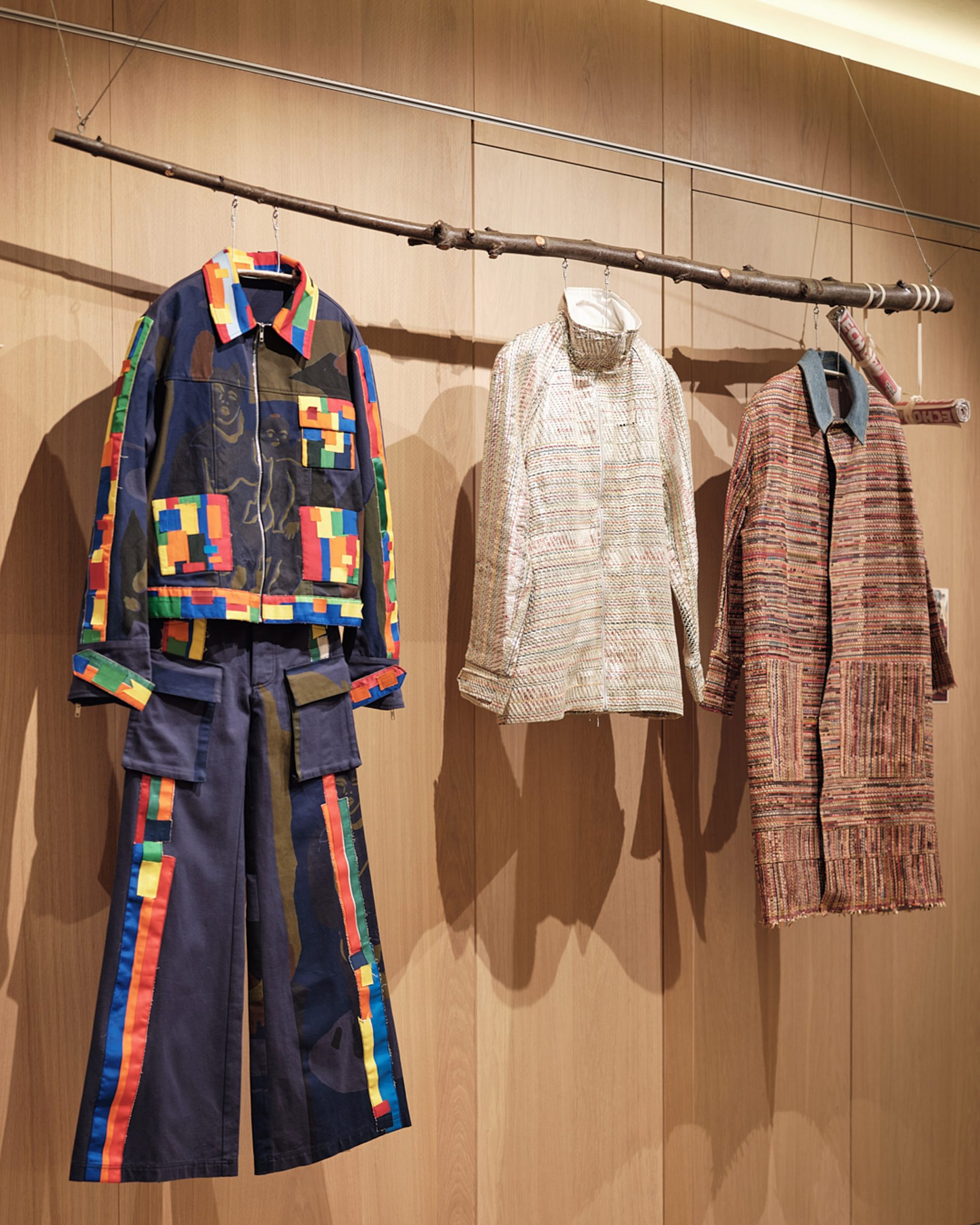 The exhibition design was completed by Edit
The exhibition design was completed by Edit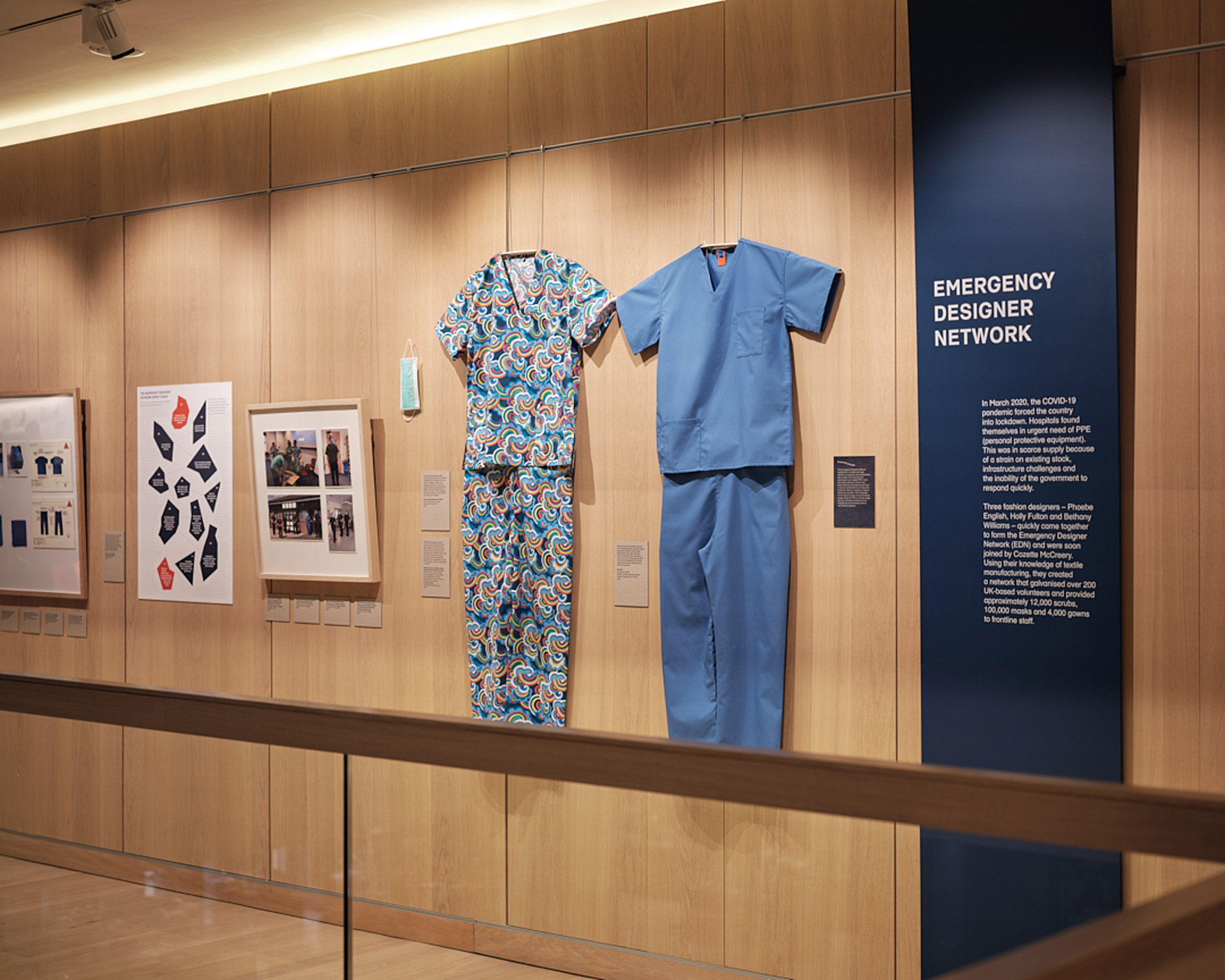 Garments are exhibited alongside research, drawings and materials
Garments are exhibited alongside research, drawings and materials
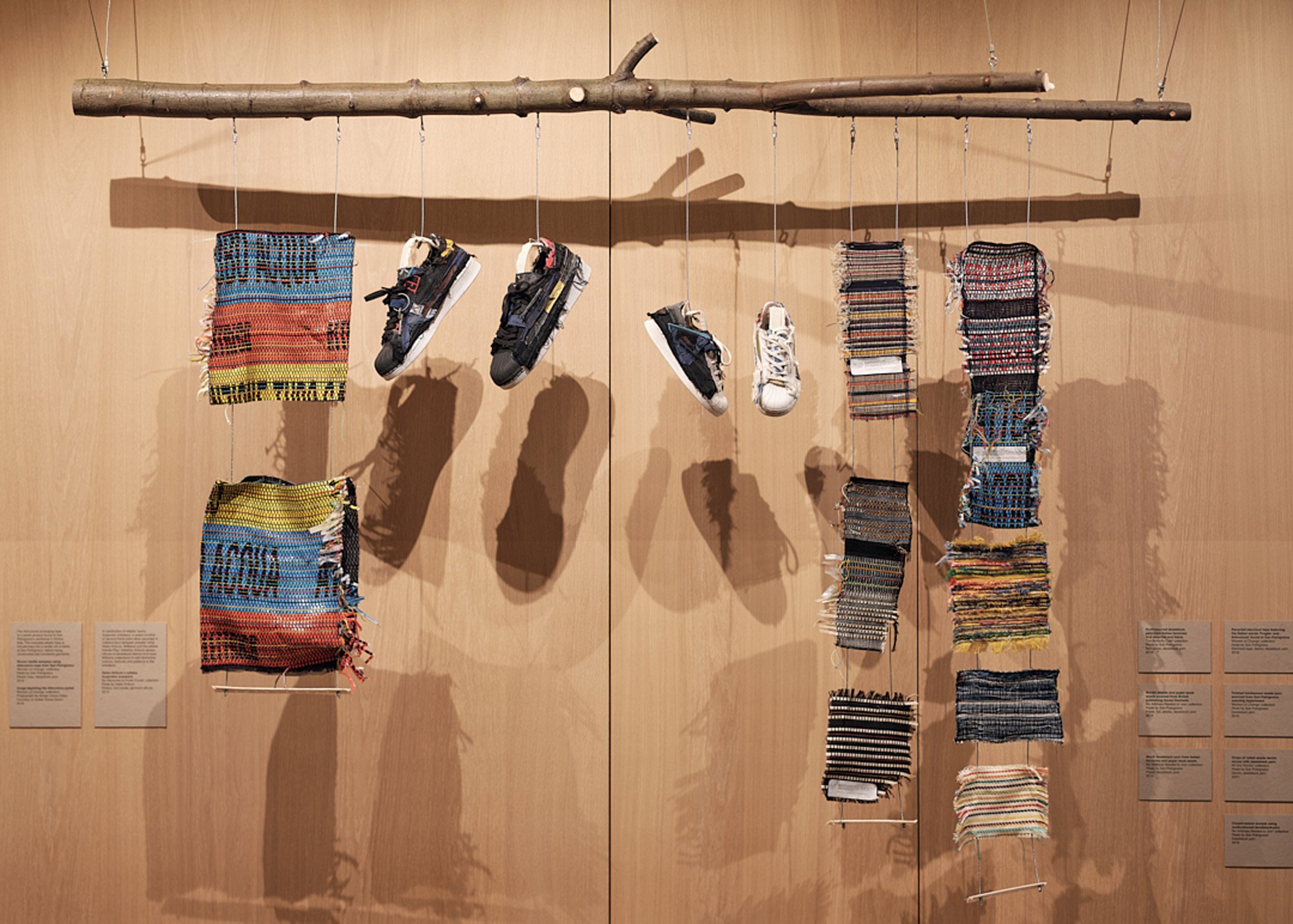 Williams' work merges streetwear and craft
Williams' work merges streetwear and craft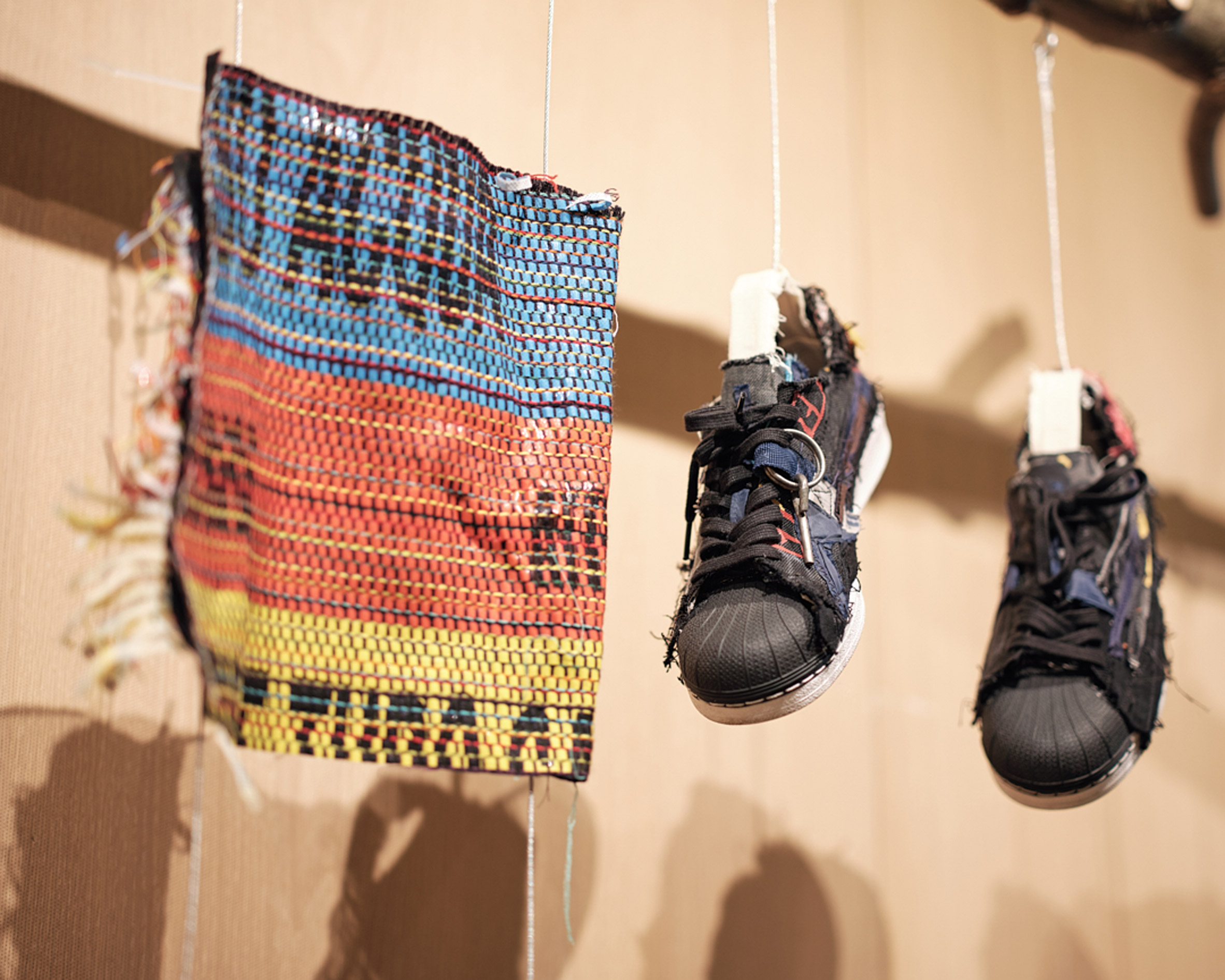 Williams has collaborated with San Patrignano, a drug and alcohol rehabilitation programme
Williams has collaborated with San Patrignano, a drug and alcohol rehabilitation programme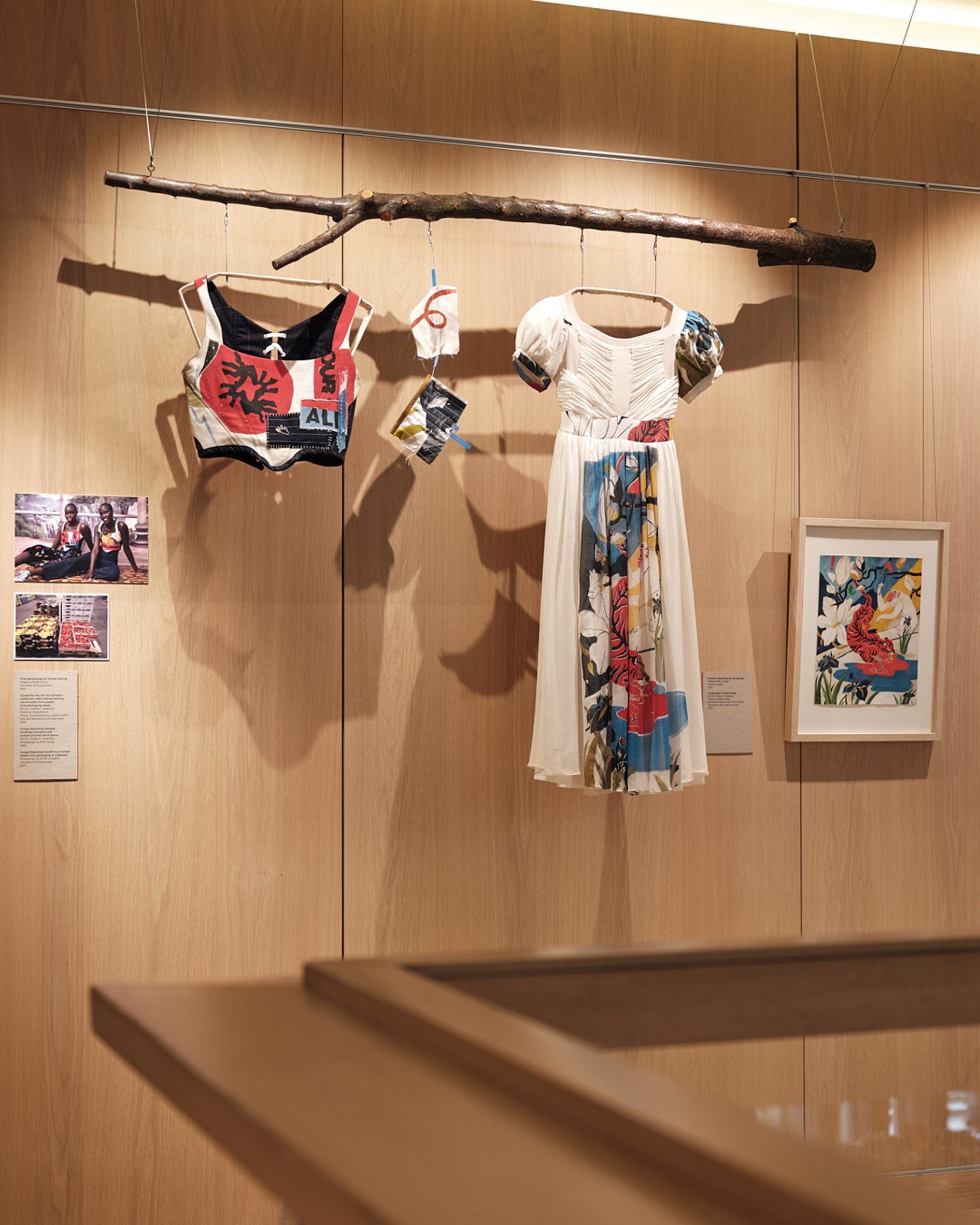 Dresses and corsetry feature boning constructed from waste materials
Dresses and corsetry feature boning constructed from waste materials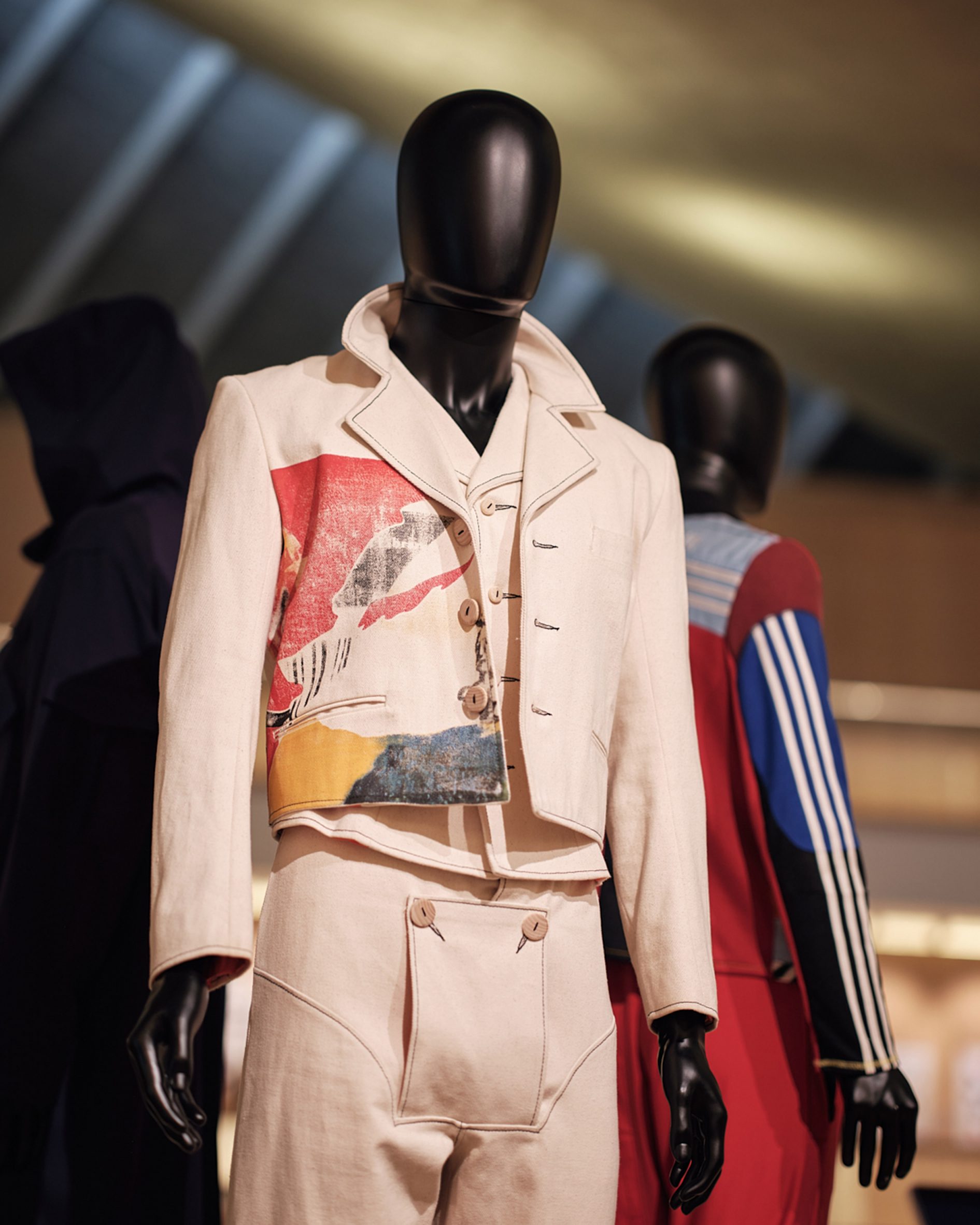 A skeleton suit was informed by a 19th-century children's playsuit
A skeleton suit was informed by a 19th-century children's playsuit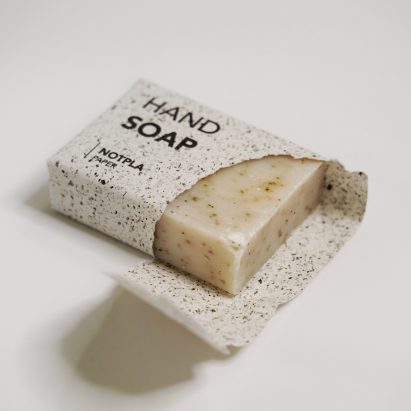
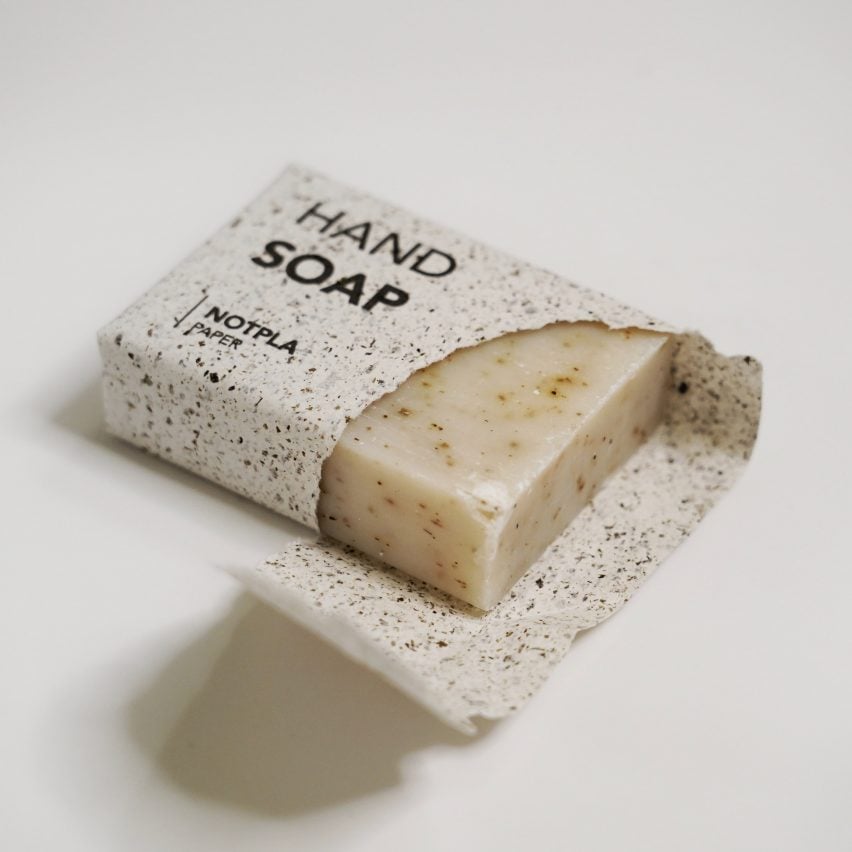
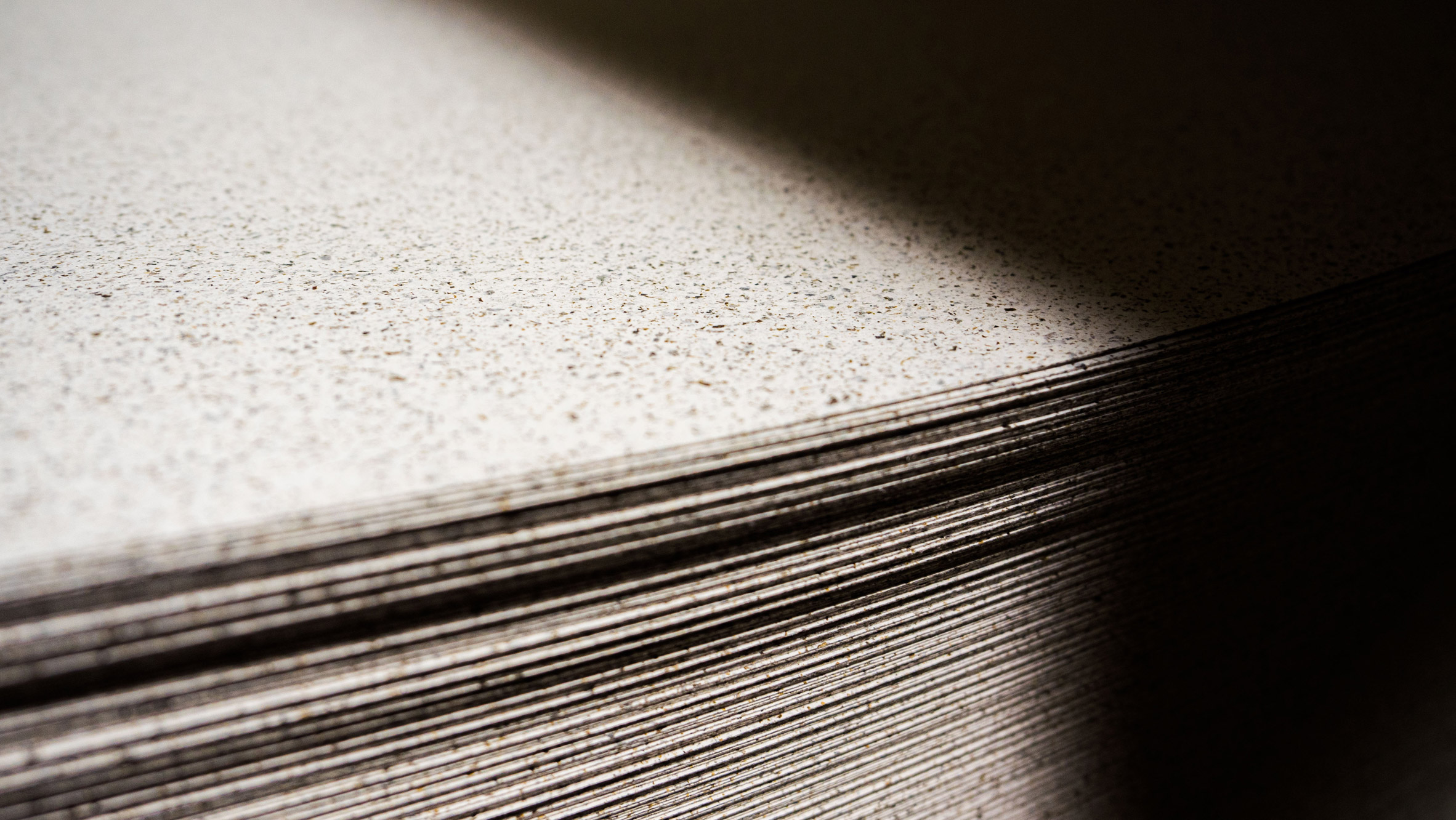 Notpla Paper is made from 30 per cent seaweed by-product
Notpla Paper is made from 30 per cent seaweed by-product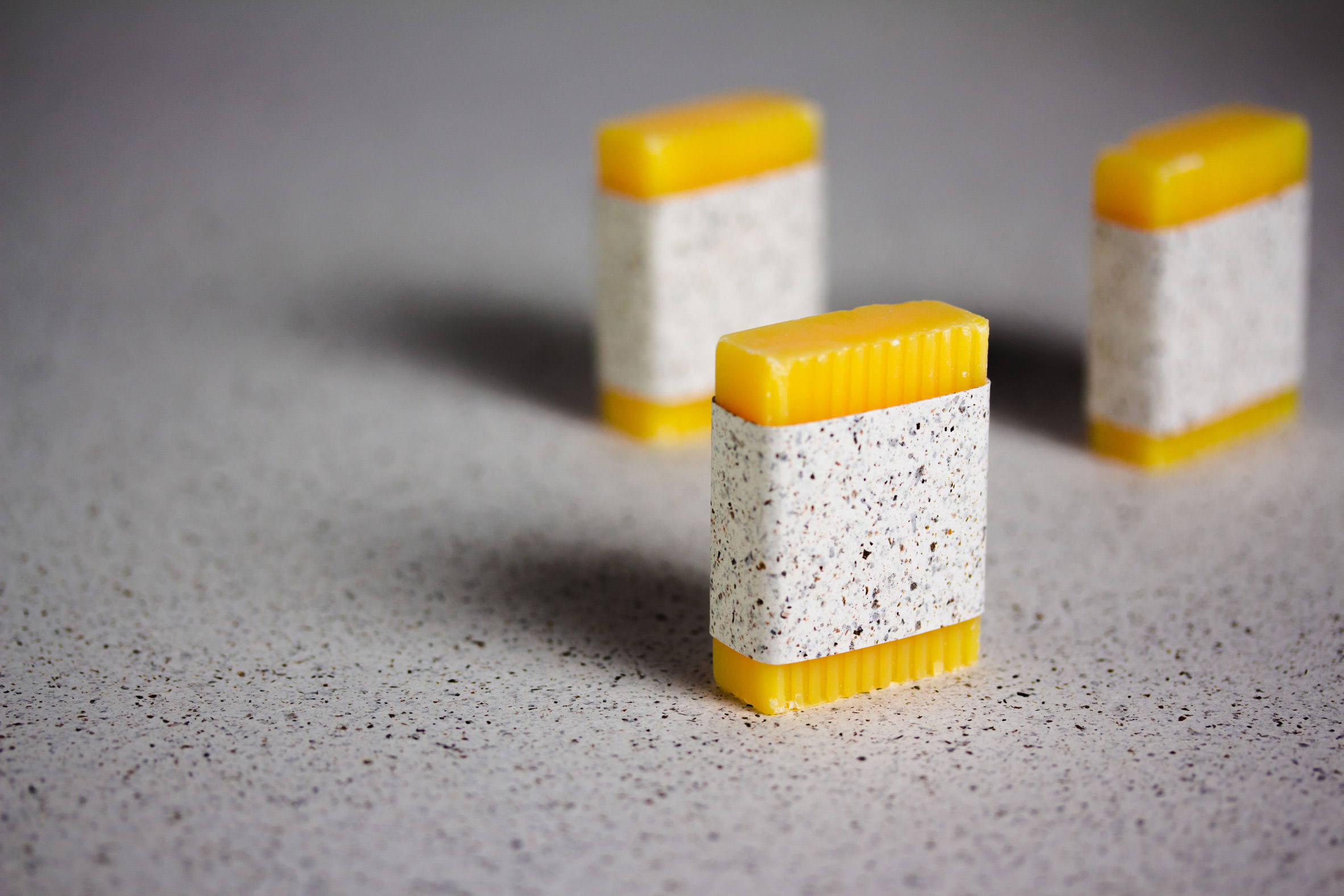 The material can be used as packaging
The material can be used as packaging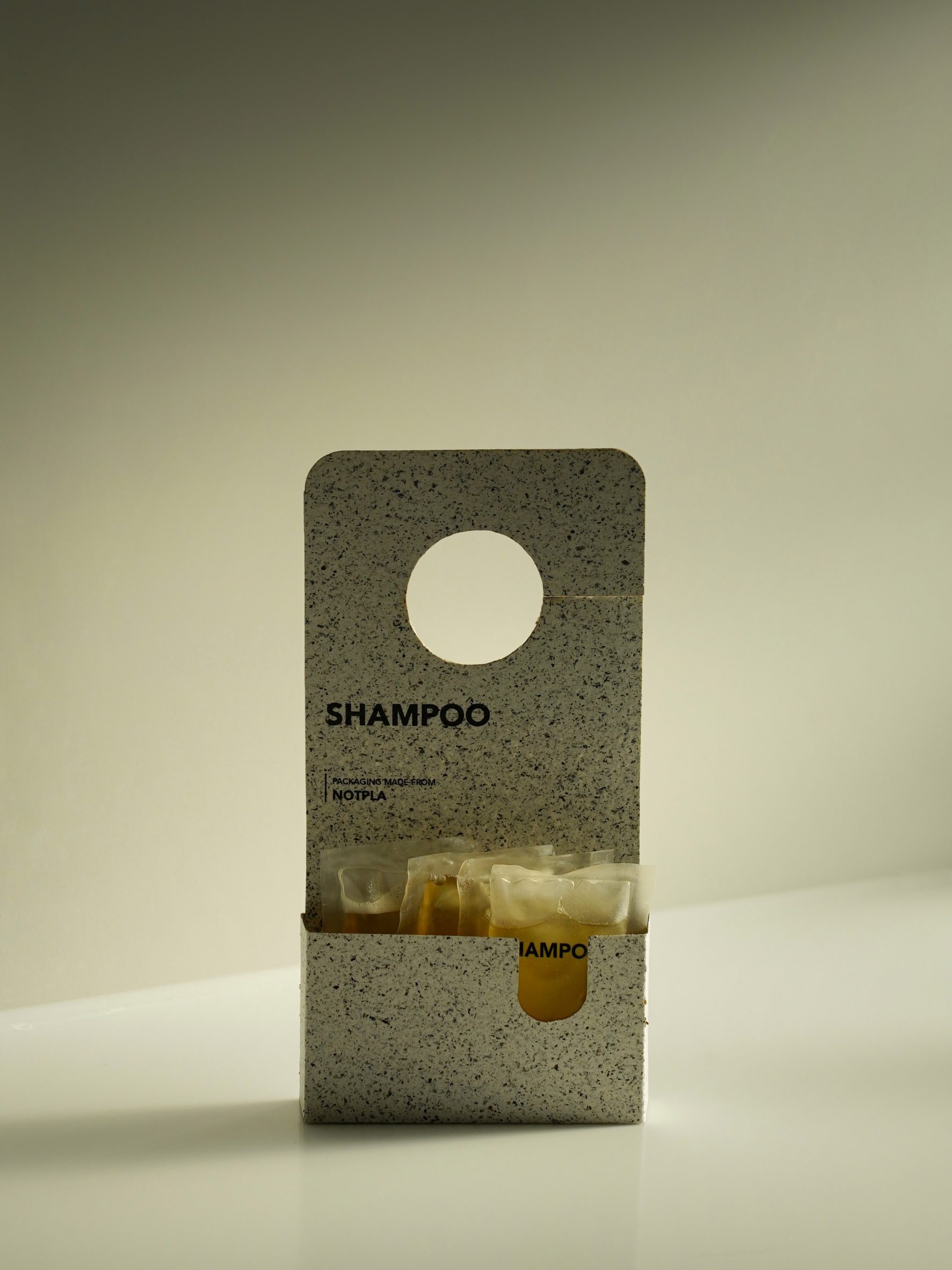 The paper can create containers for various products
The paper can create containers for various products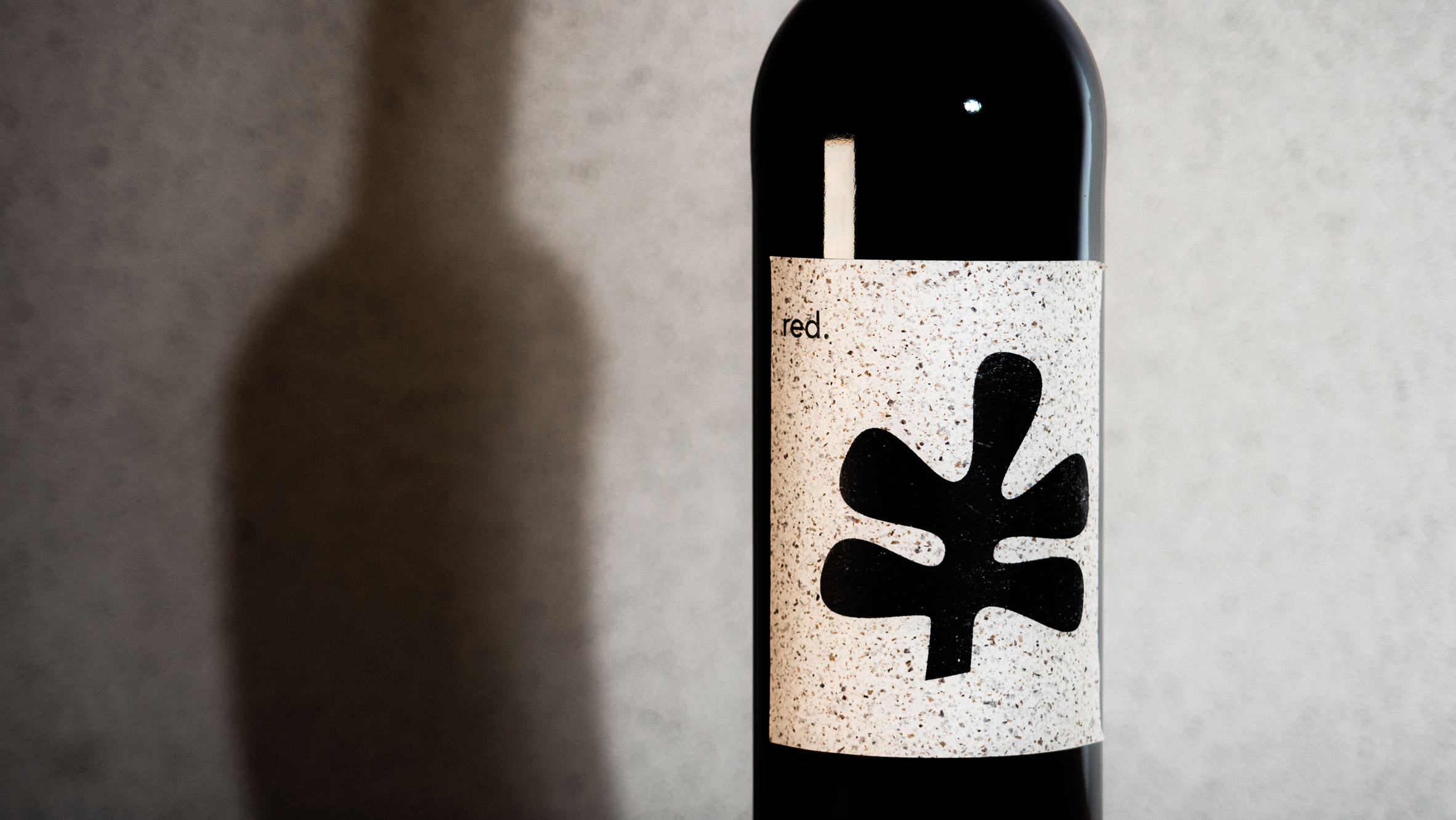 A minimal wine label made from Notpla Paper
A minimal wine label made from Notpla Paper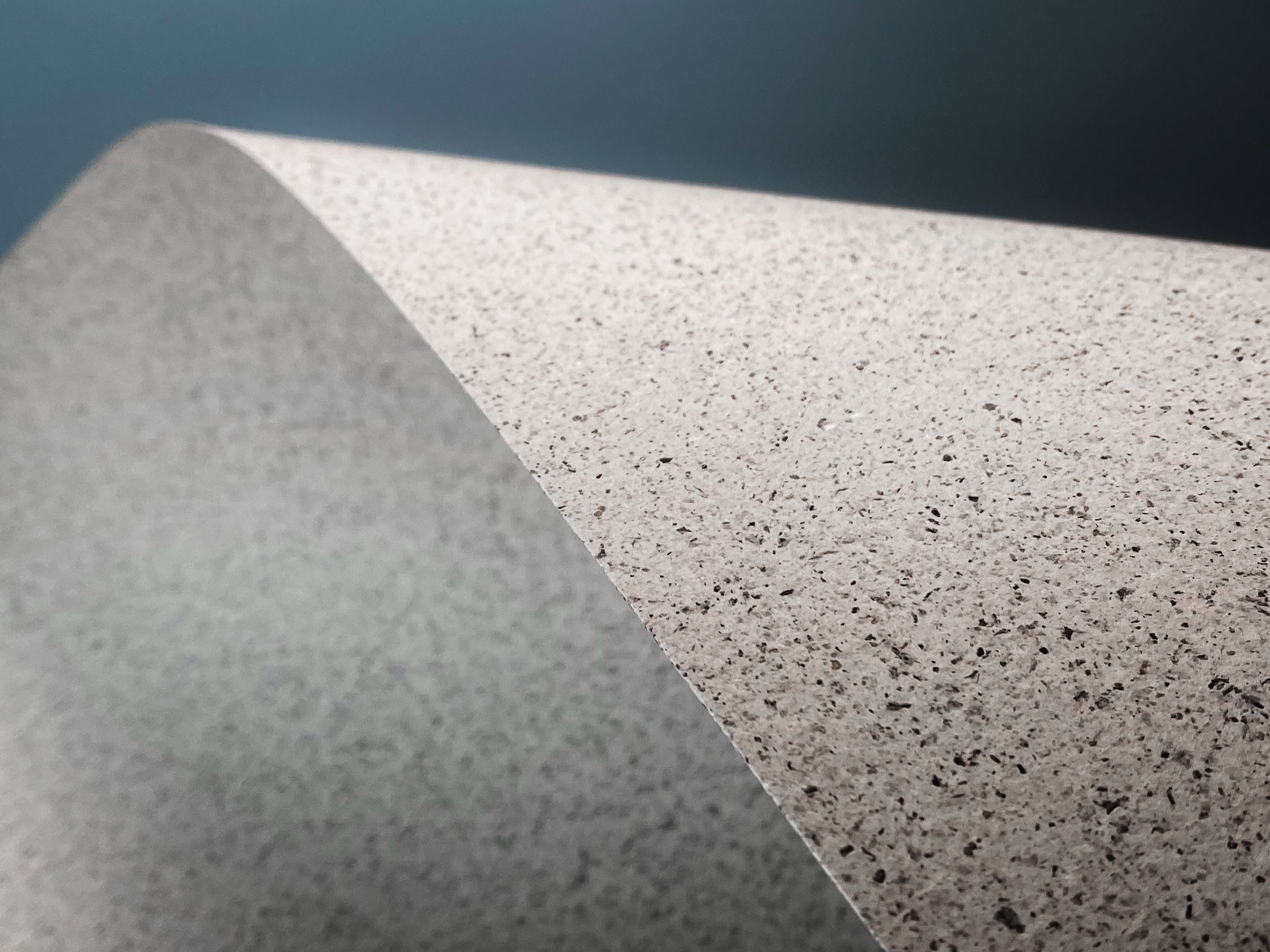 The paper has a speckled appearance
The paper has a speckled appearance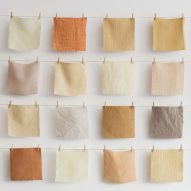
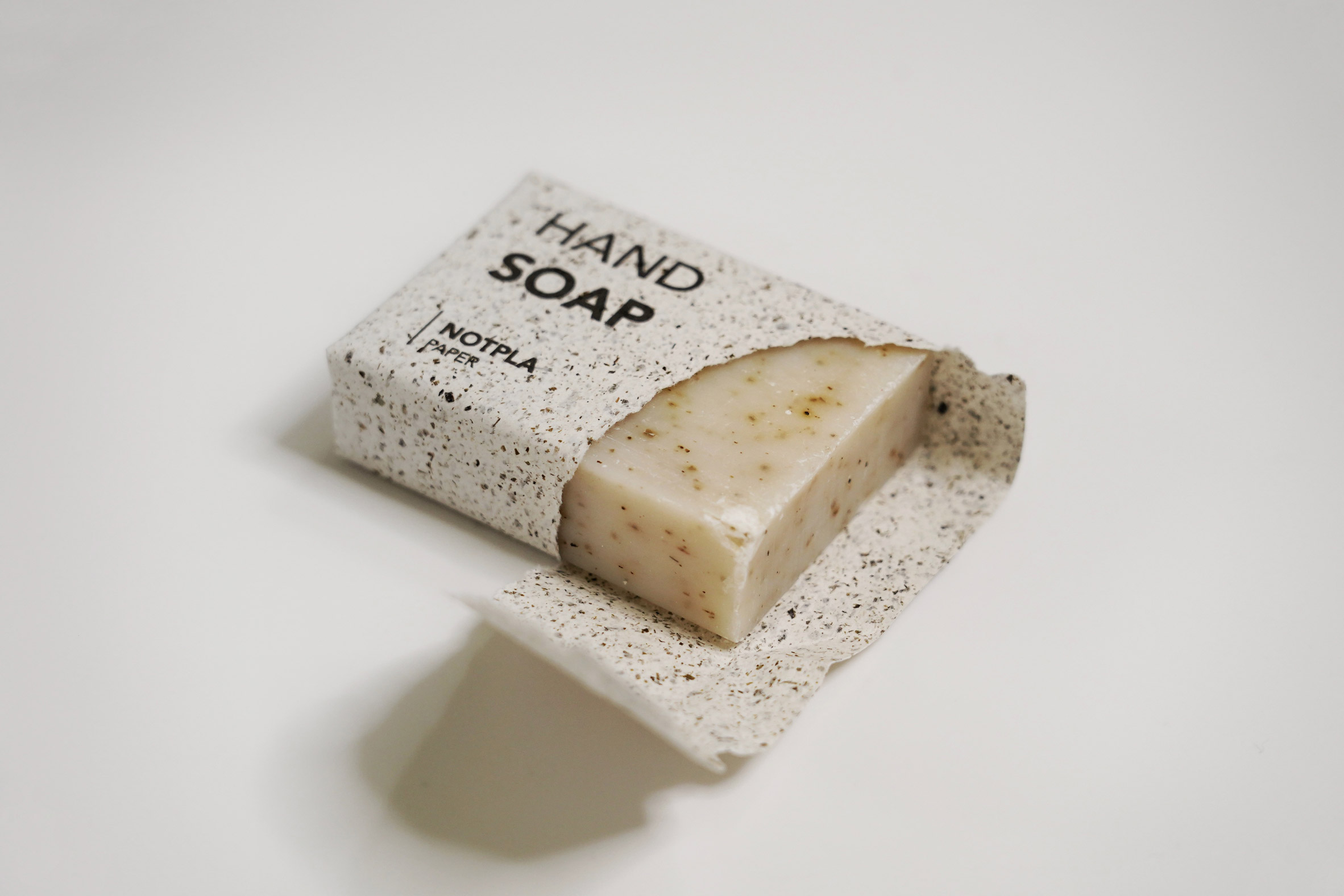 Notpla aims to create entirely wood-free paper by 2024
Notpla aims to create entirely wood-free paper by 2024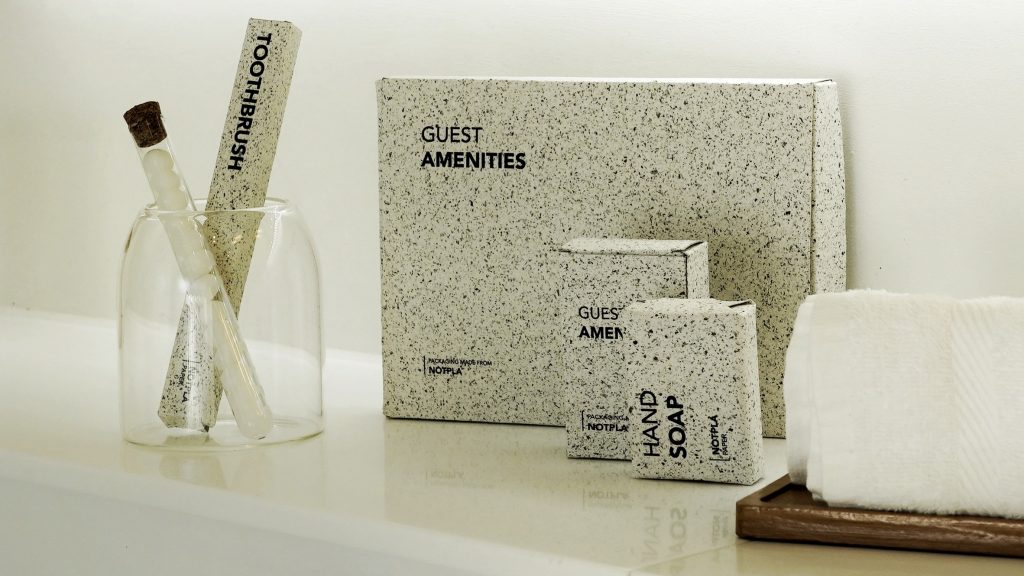
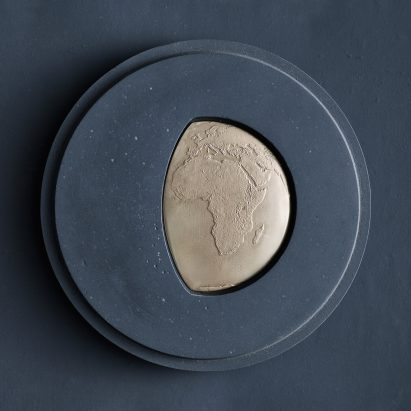
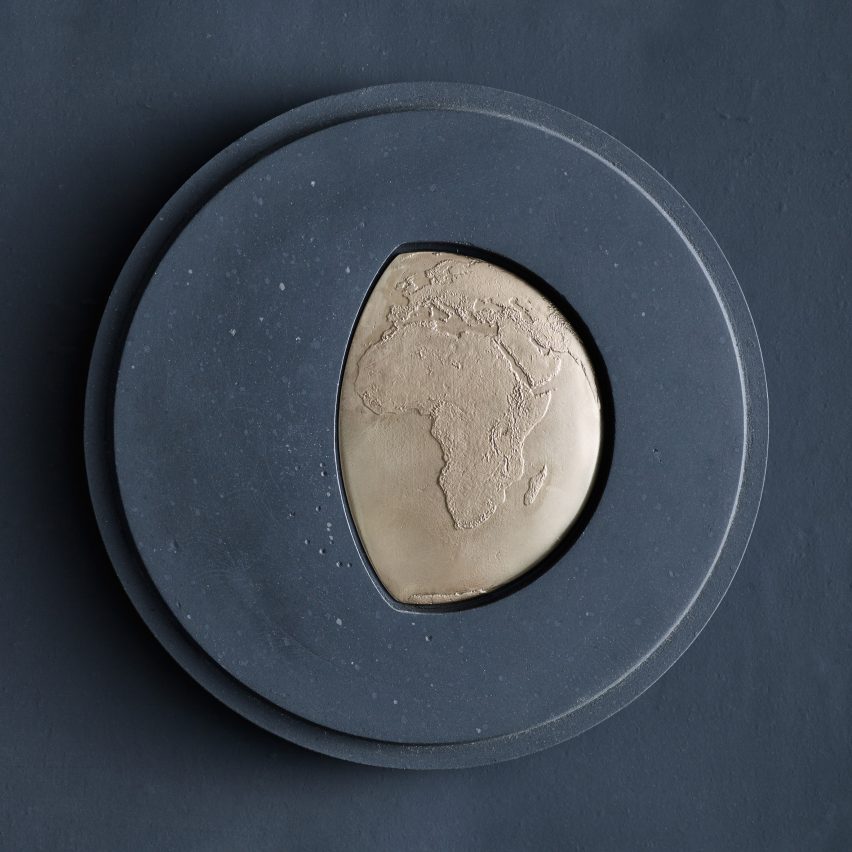
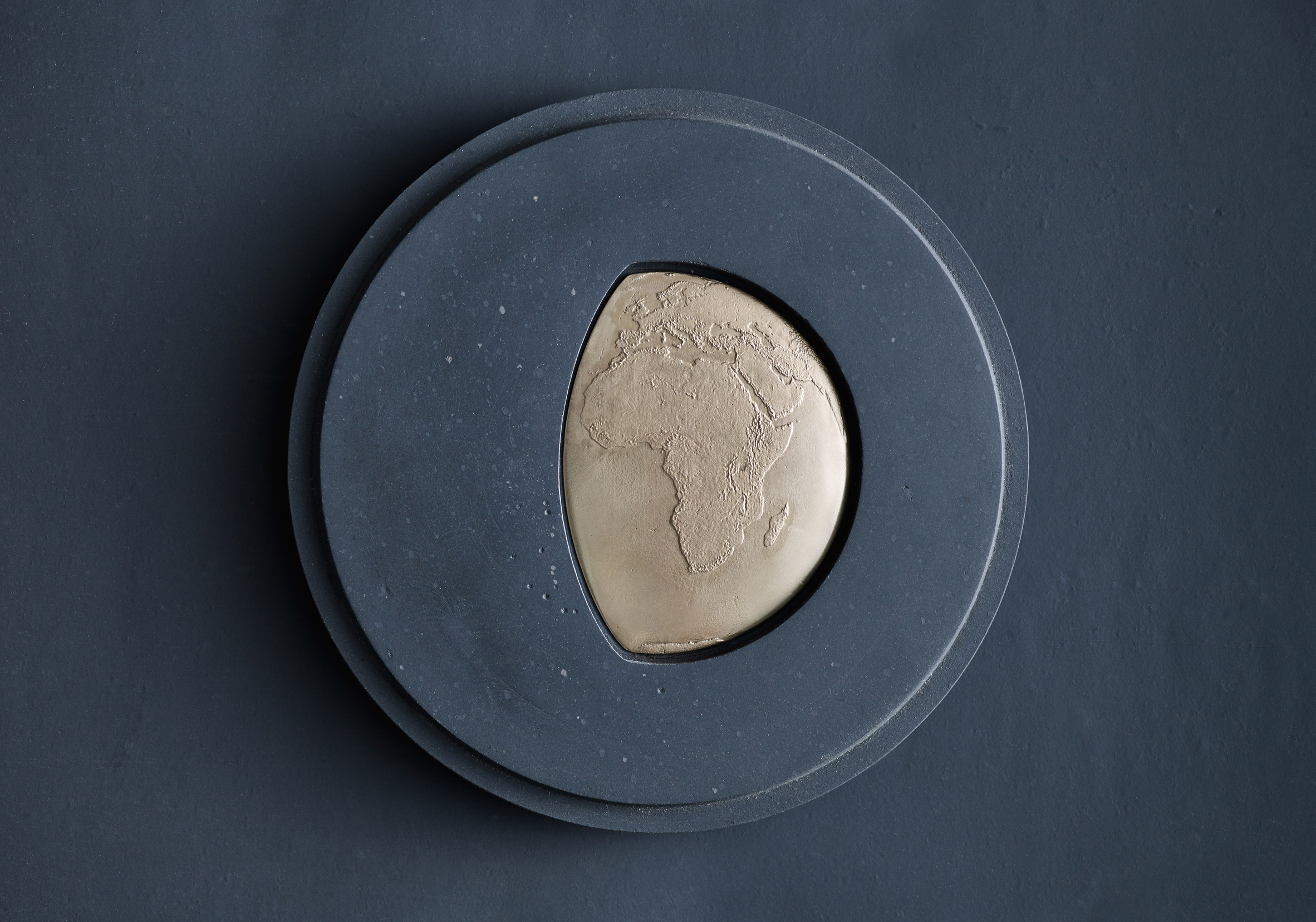 The first five Earthshot Prize winners received medals designed by Meindertsma
The first five Earthshot Prize winners received medals designed by Meindertsma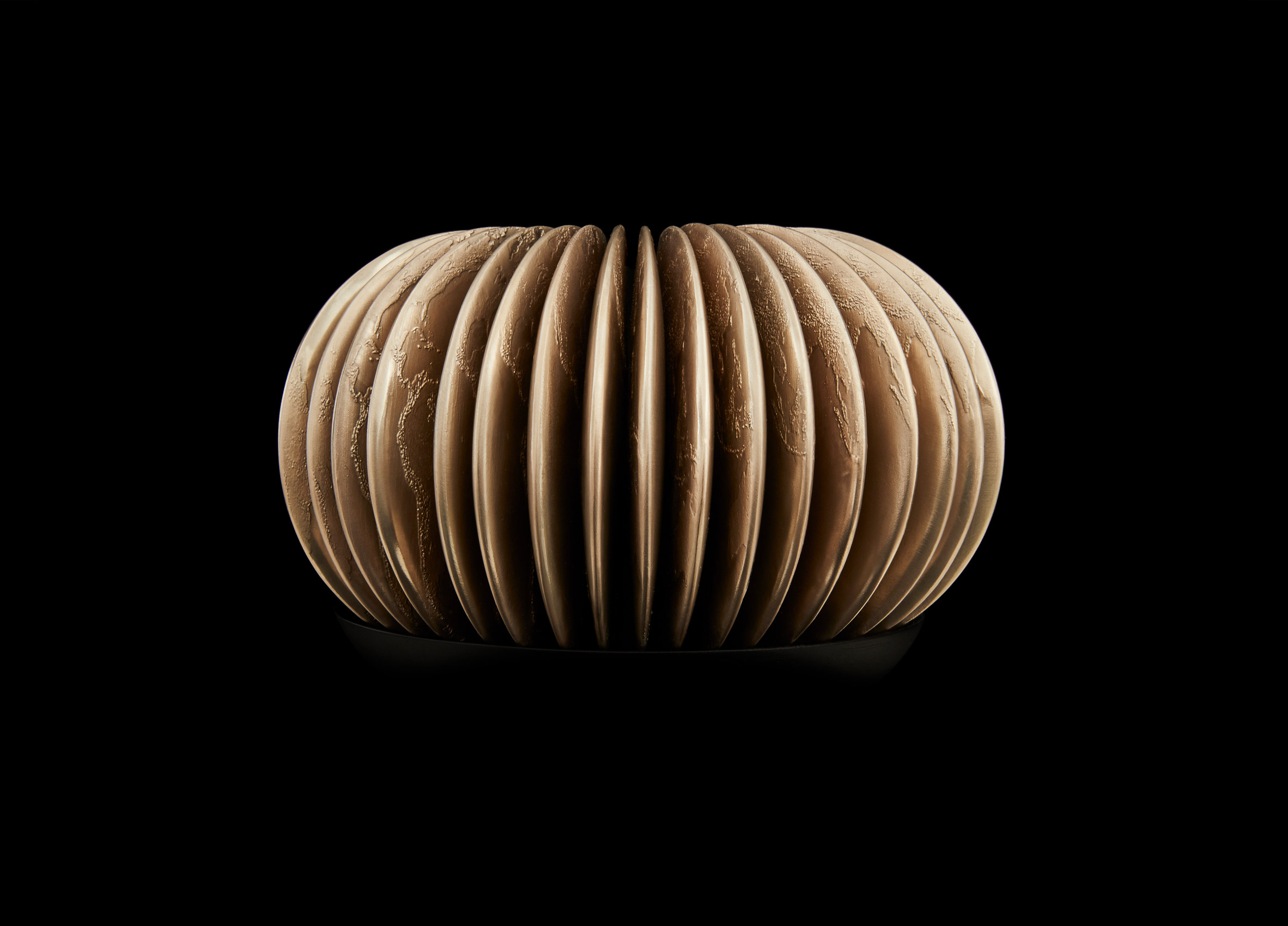 Winners were selected from a shortlist of 15 finalists
Winners were selected from a shortlist of 15 finalists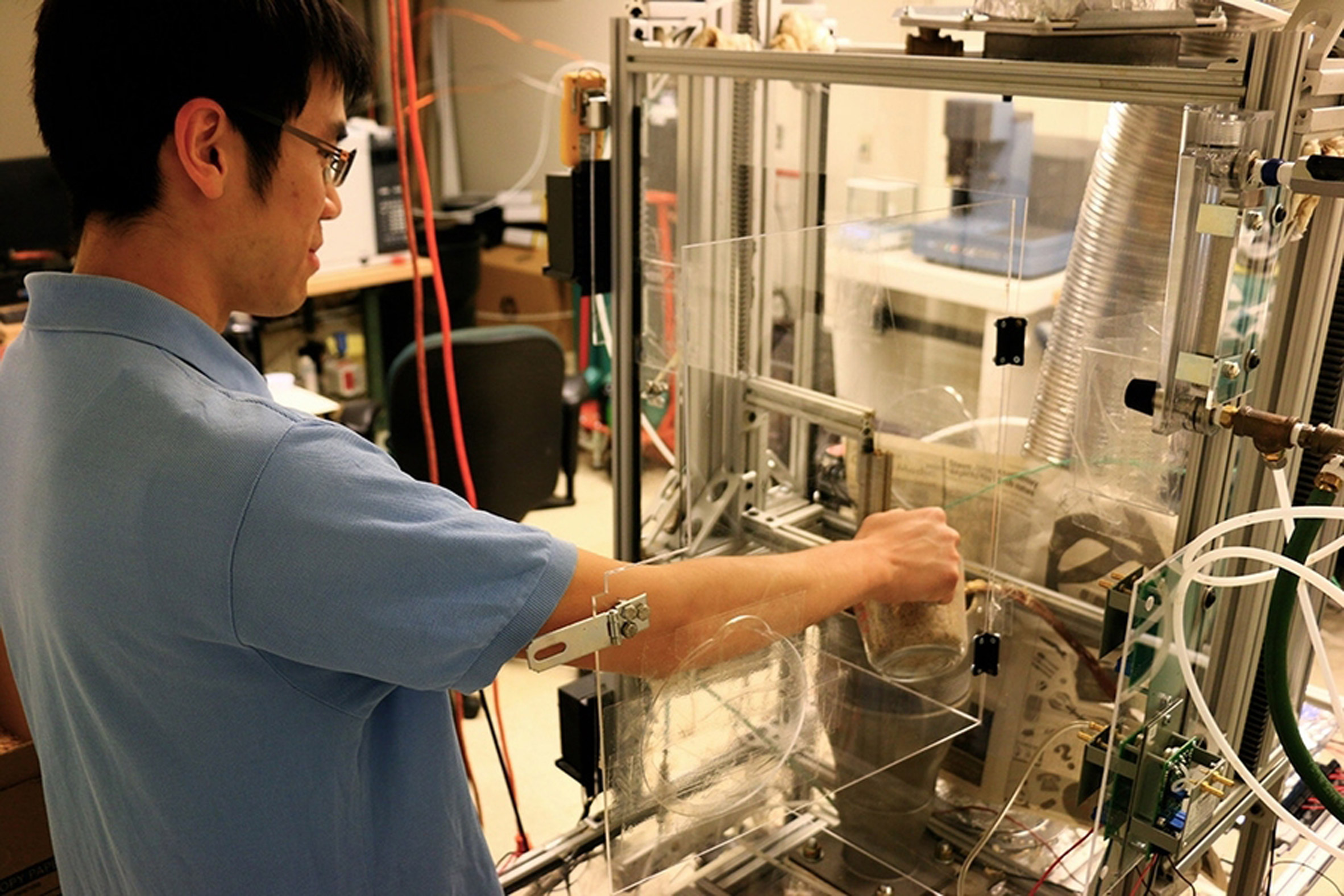 A tool that turns waste into fuel by Takachar won the Clean our Air category
A tool that turns waste into fuel by Takachar won the Clean our Air category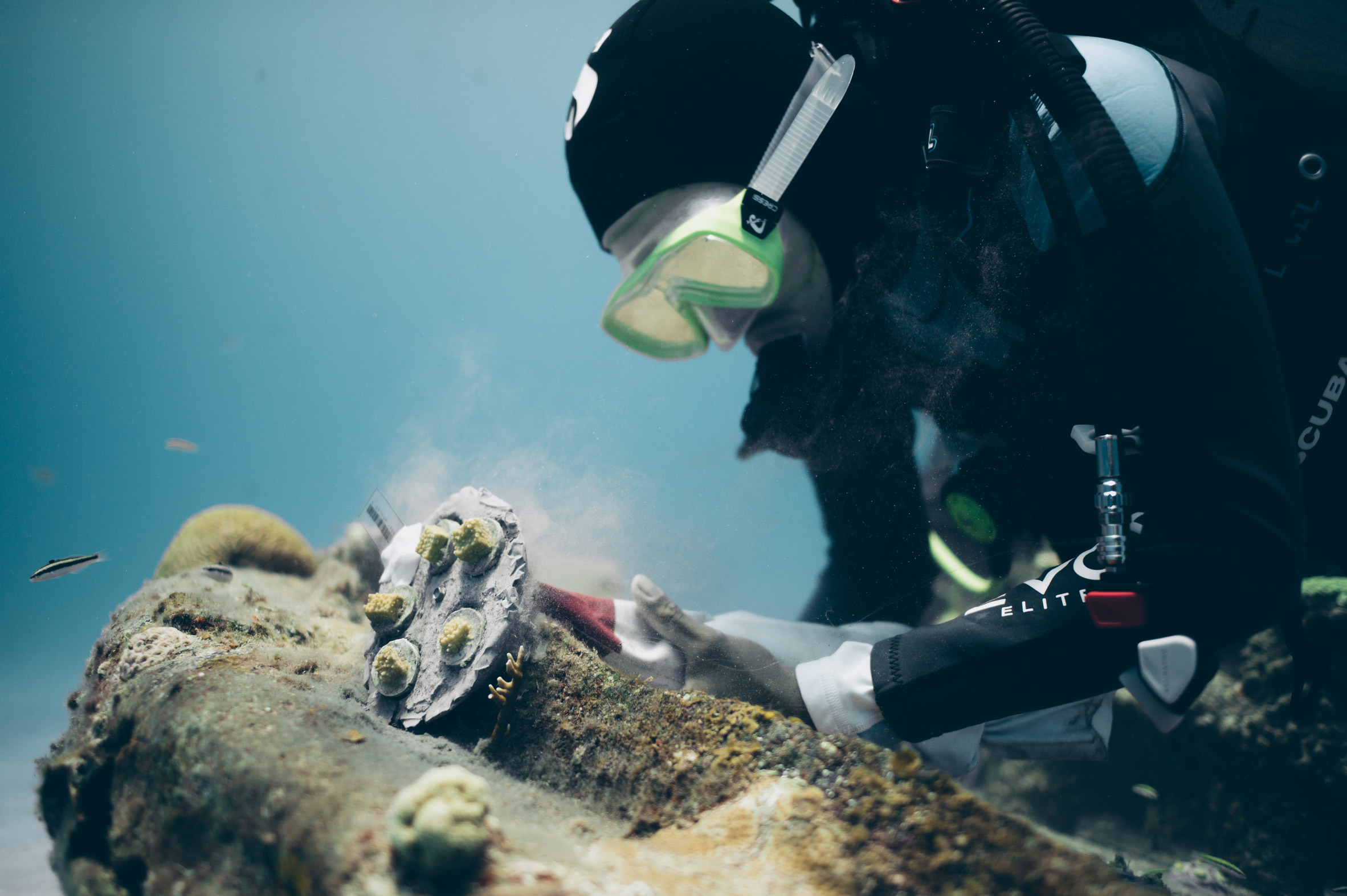 Coral Vita won the Revive our Oceans category for its coral farming method
Coral Vita won the Revive our Oceans category for its coral farming method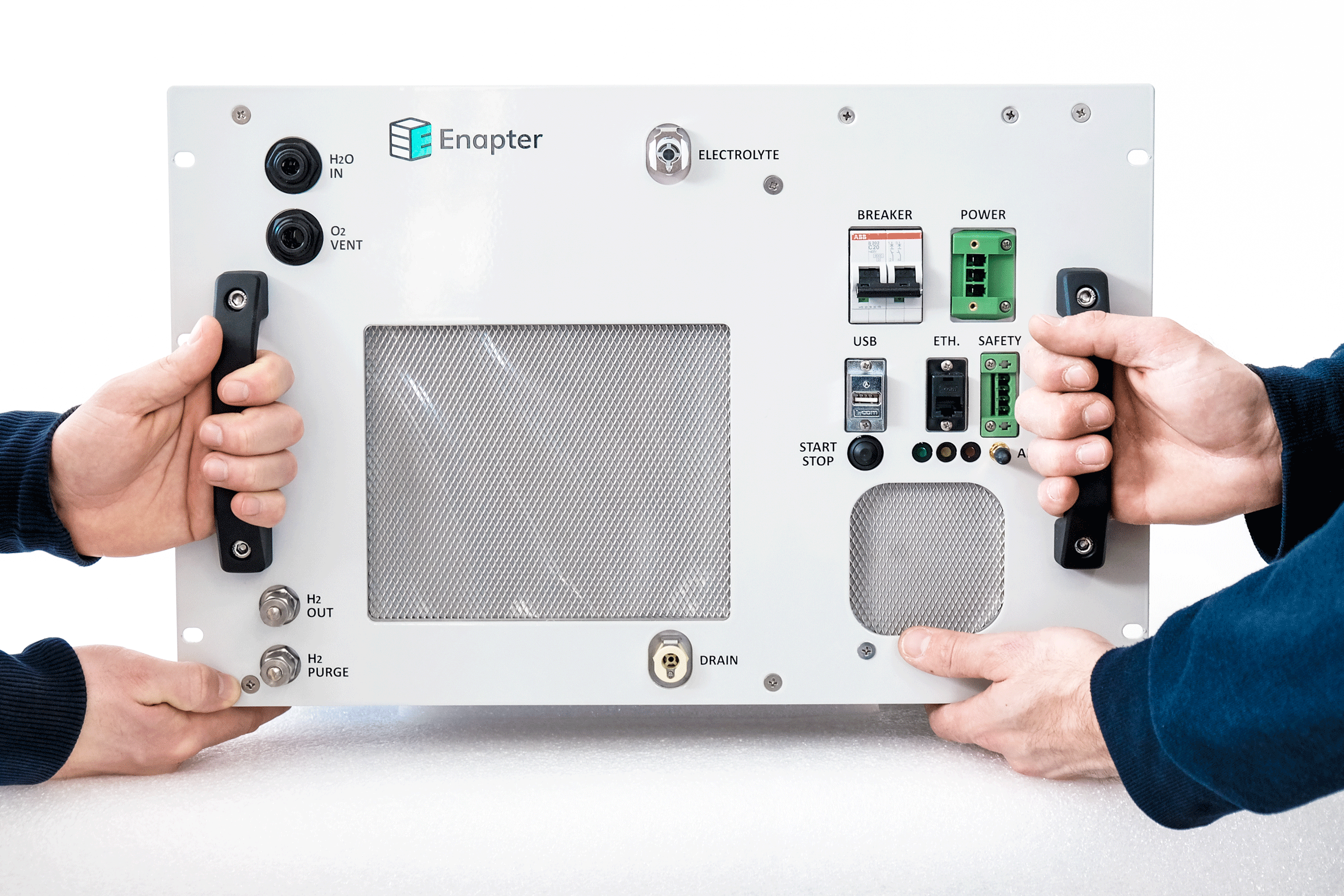 A green hydrogen generator by Enapter won the Fix our Climate category
A green hydrogen generator by Enapter won the Fix our Climate category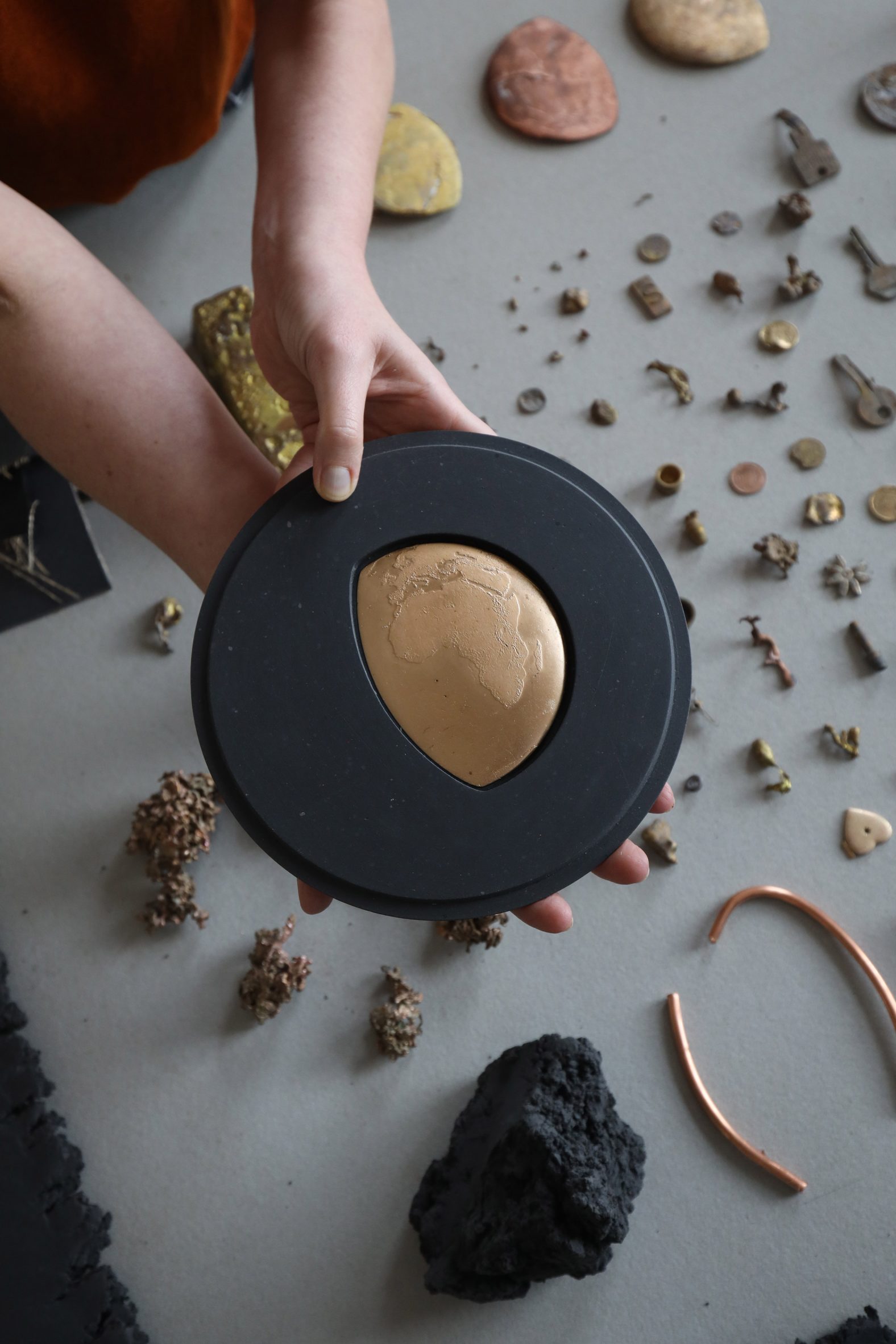 Each medal is unique and made from recycled materials
Each medal is unique and made from recycled materials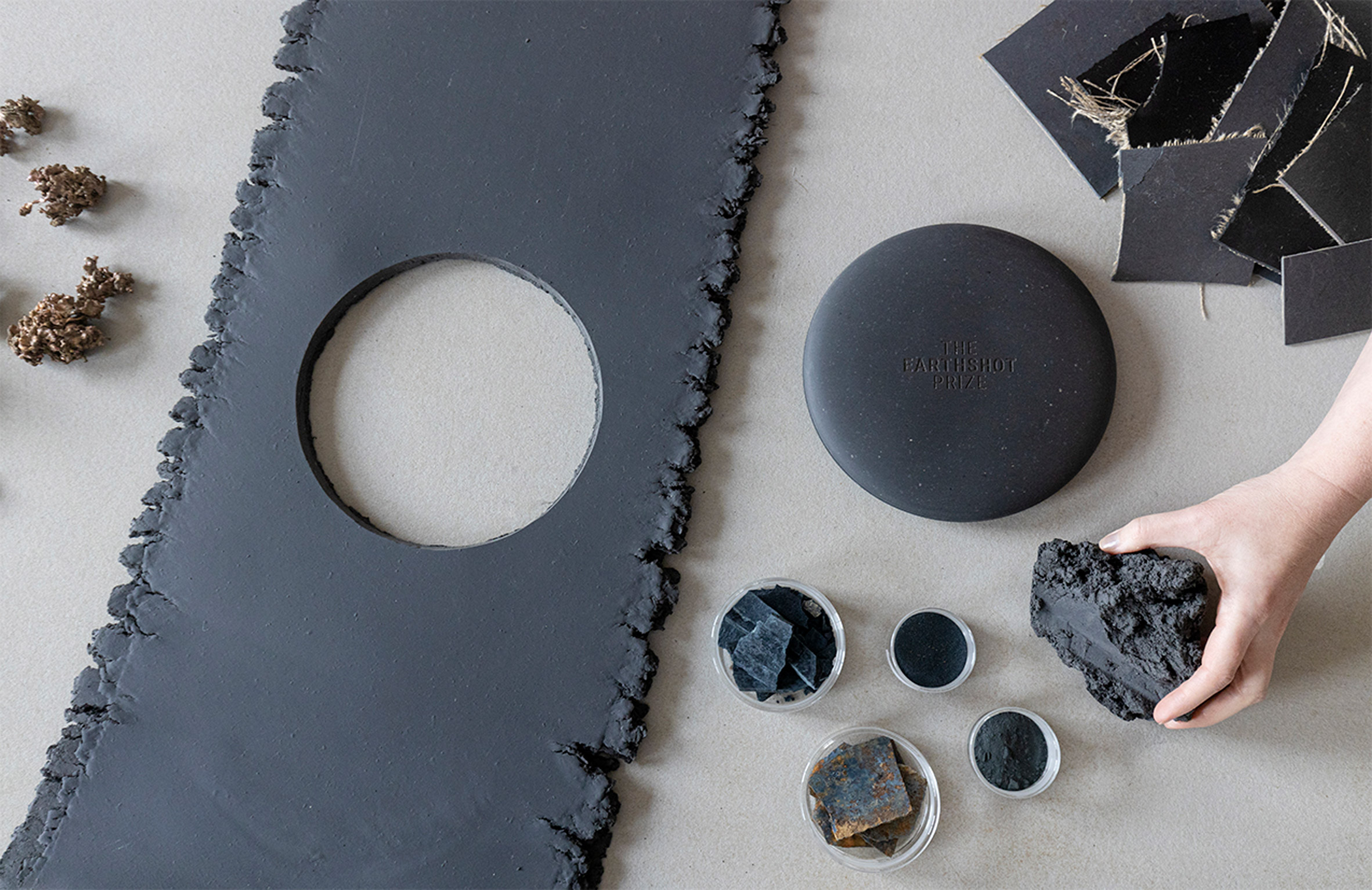 The case is made from recycled linoleum
The case is made from recycled linoleum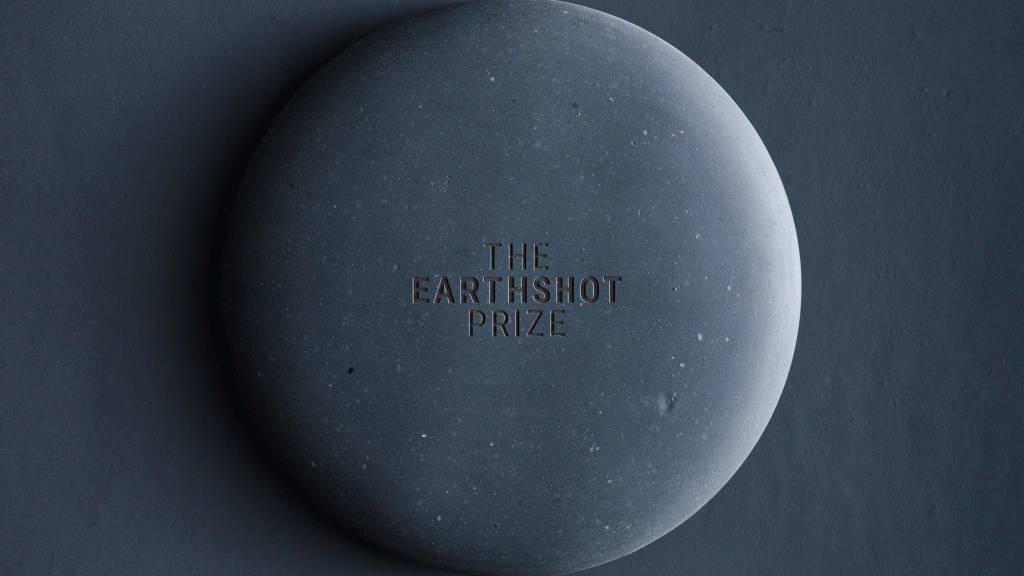
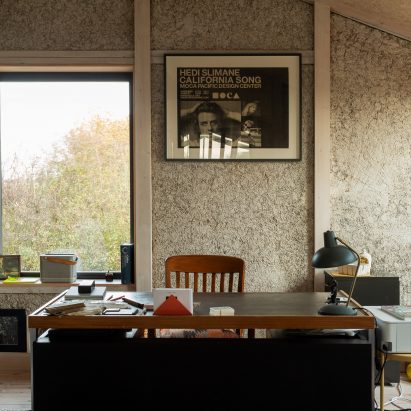
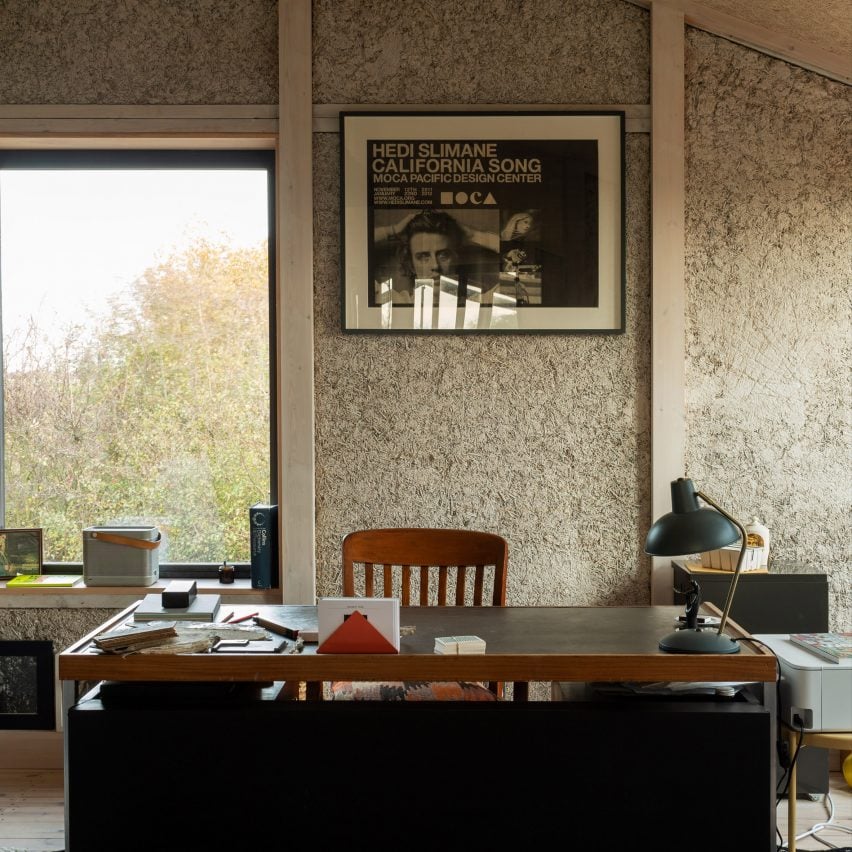
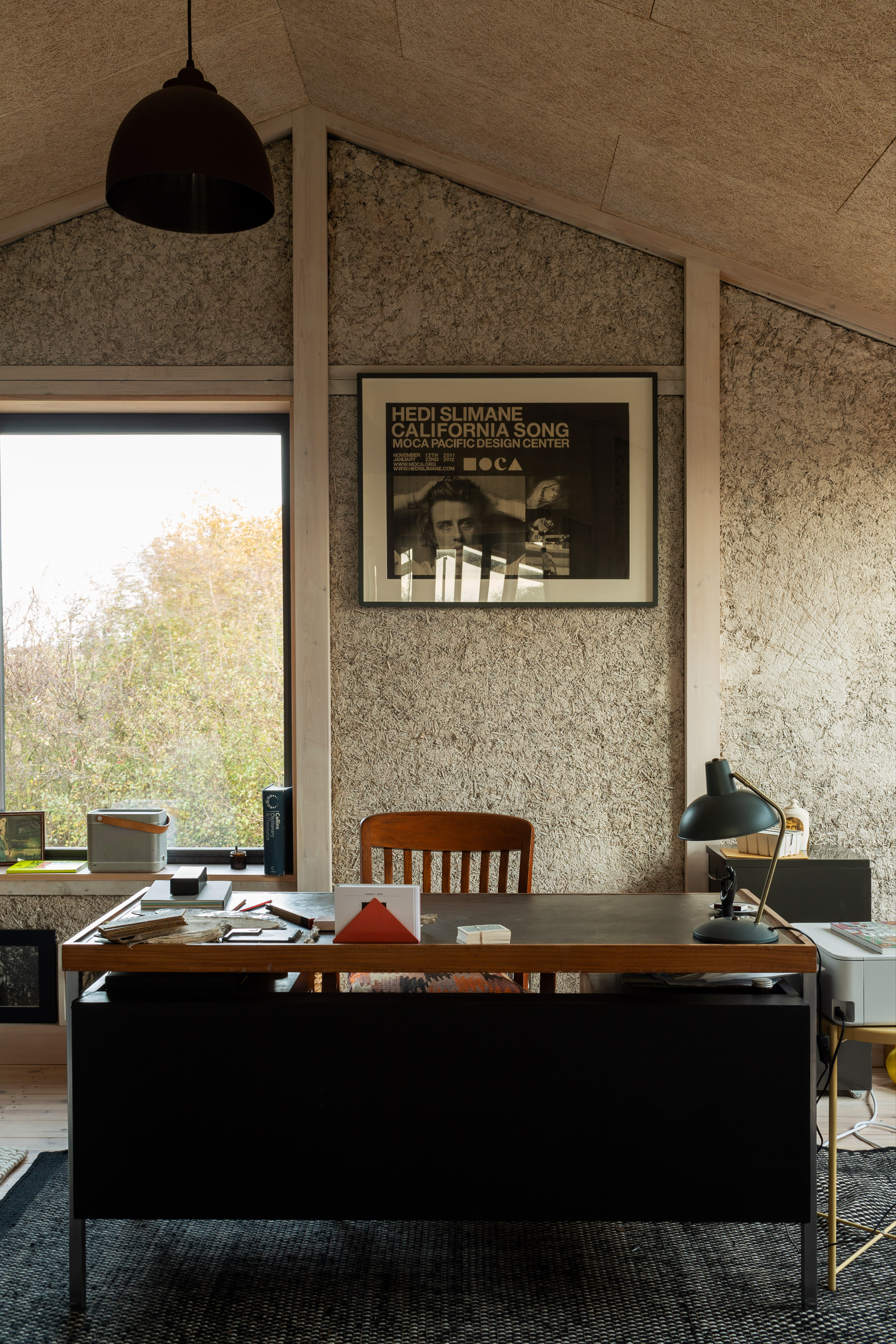
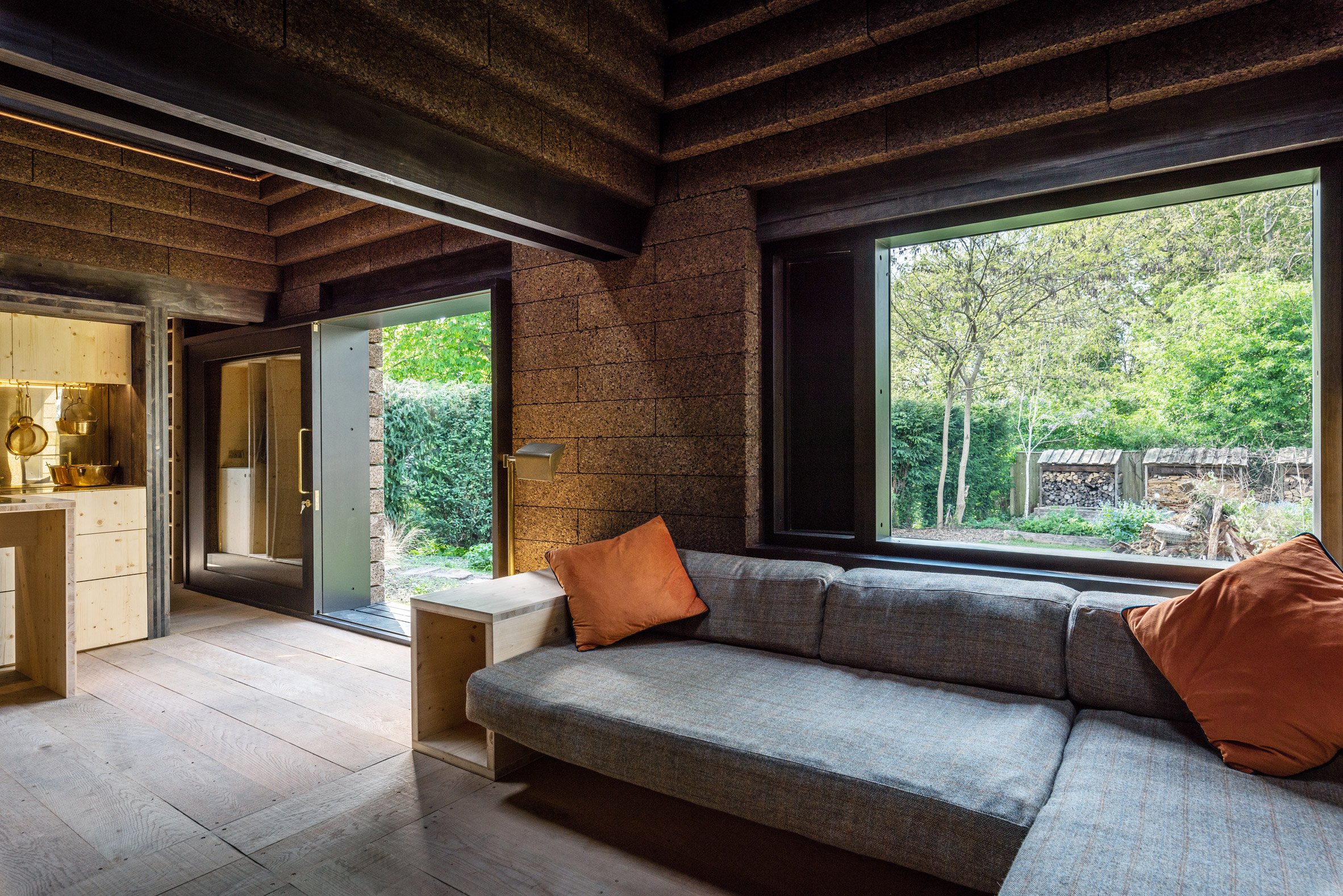
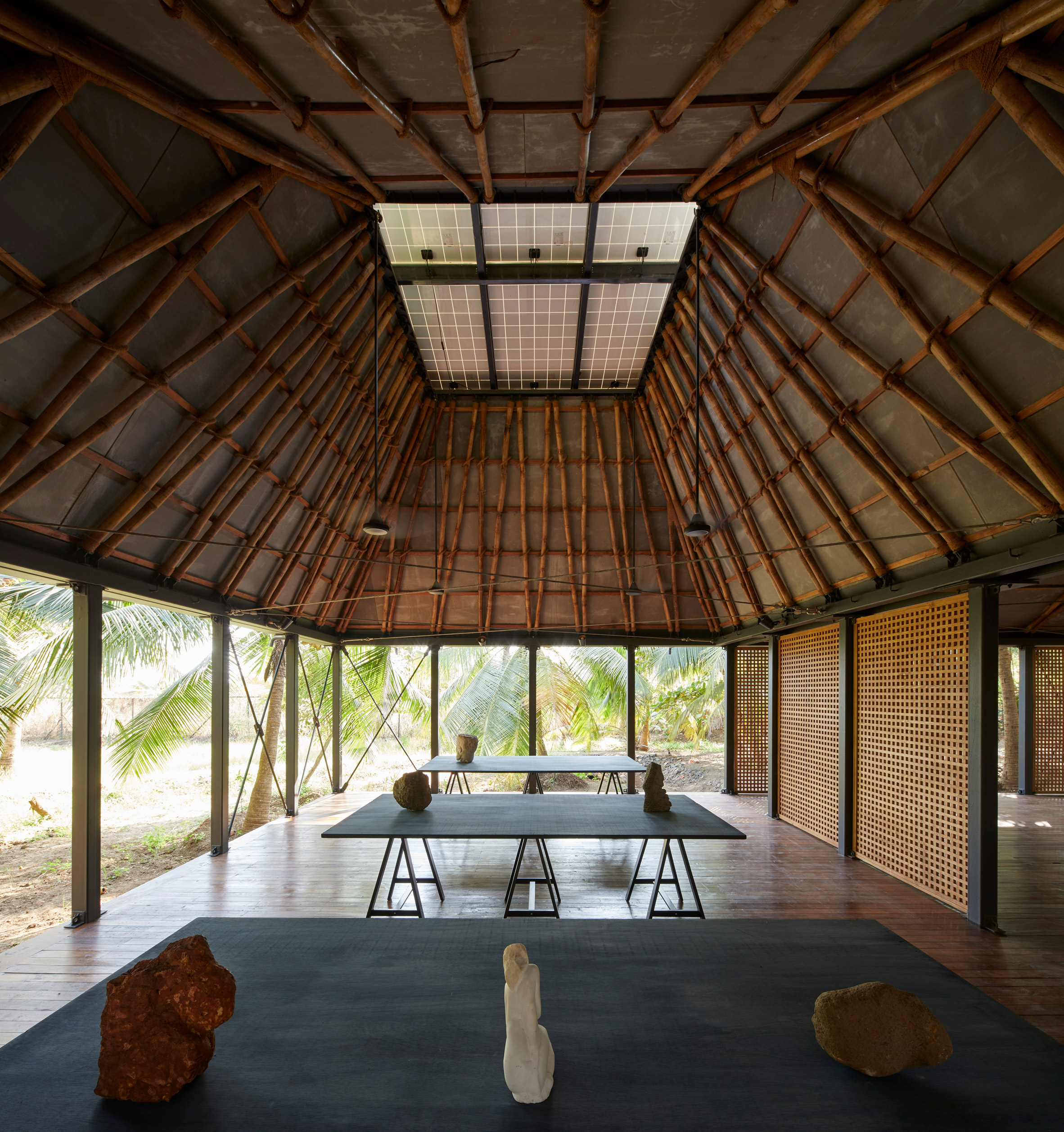
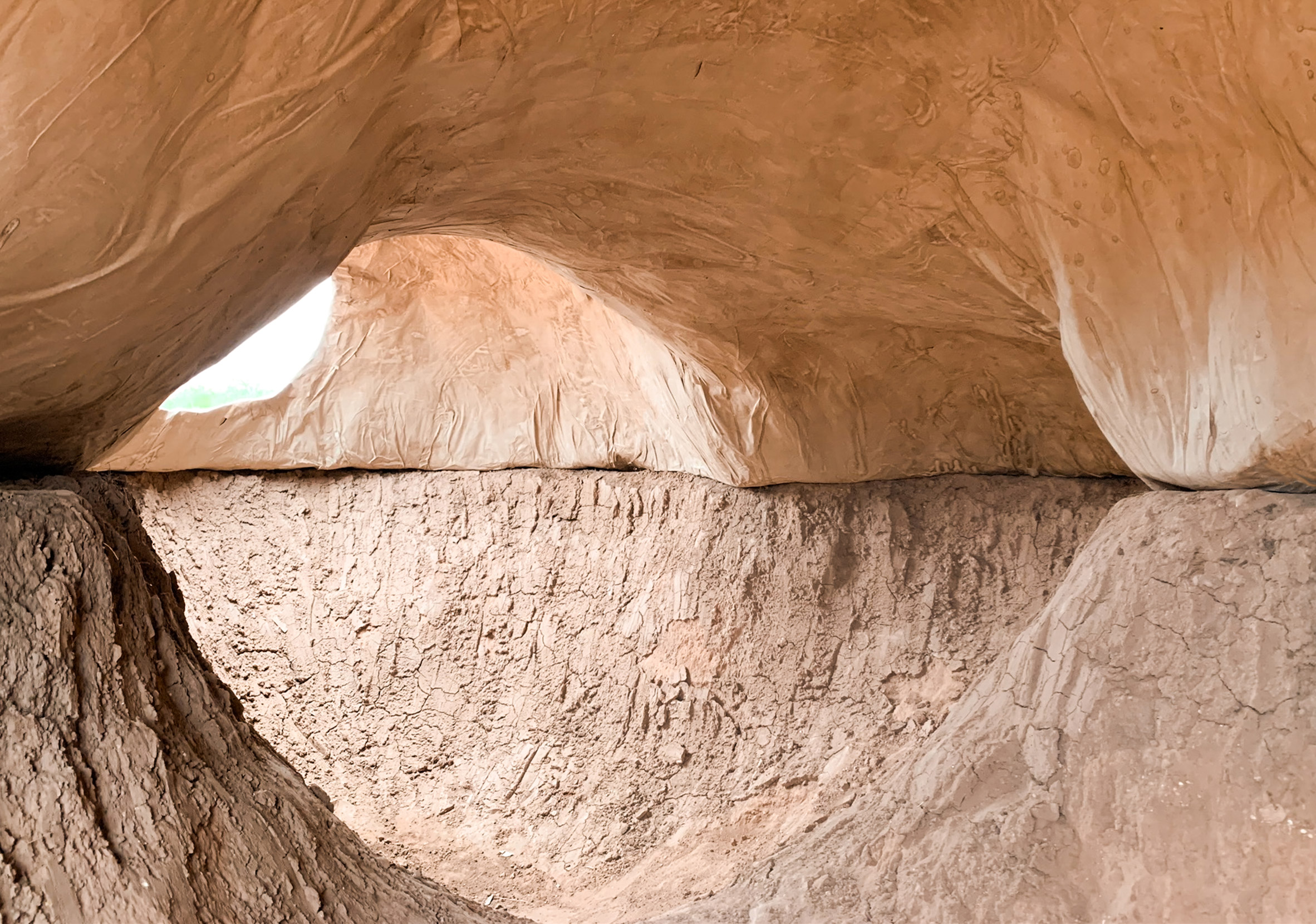
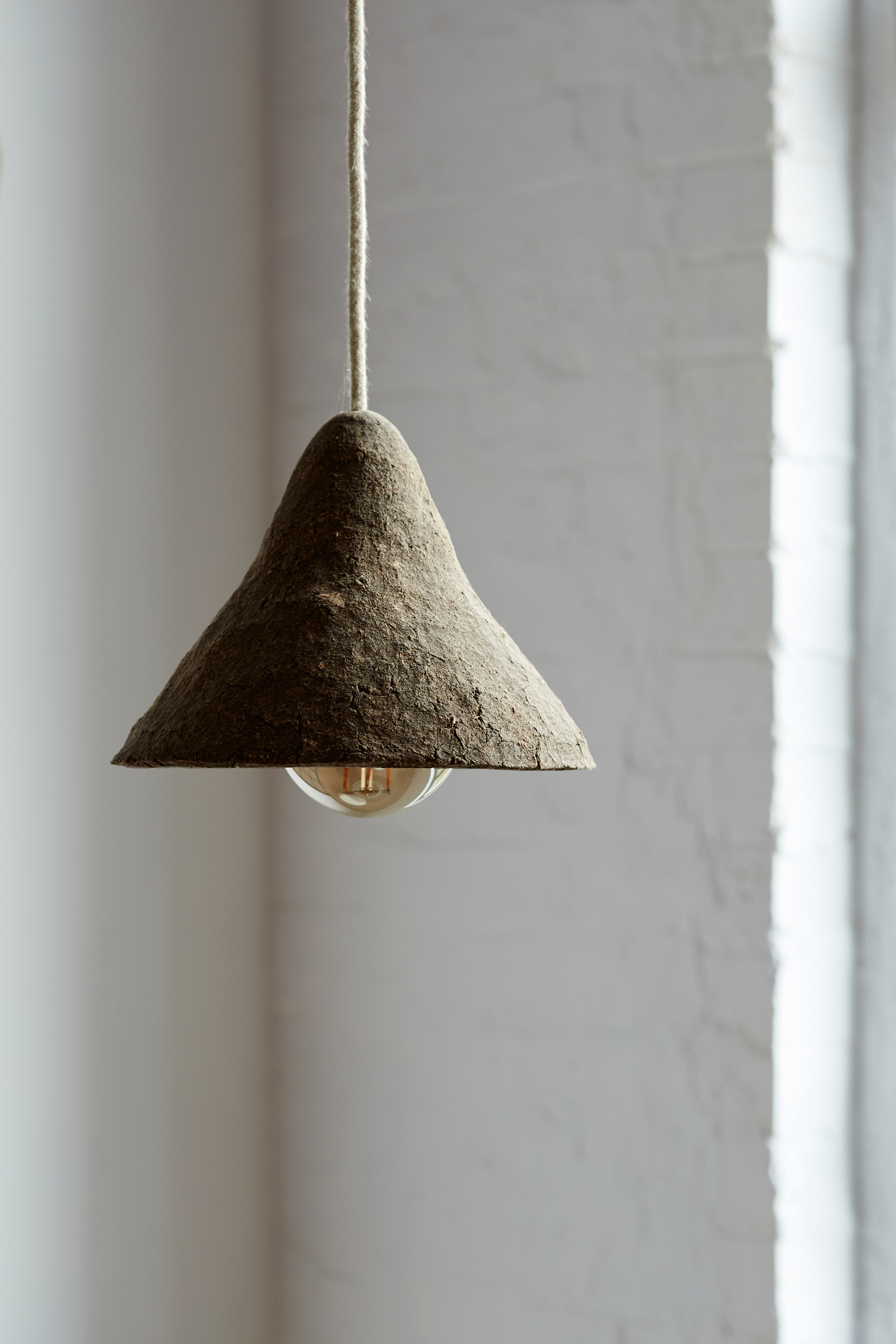
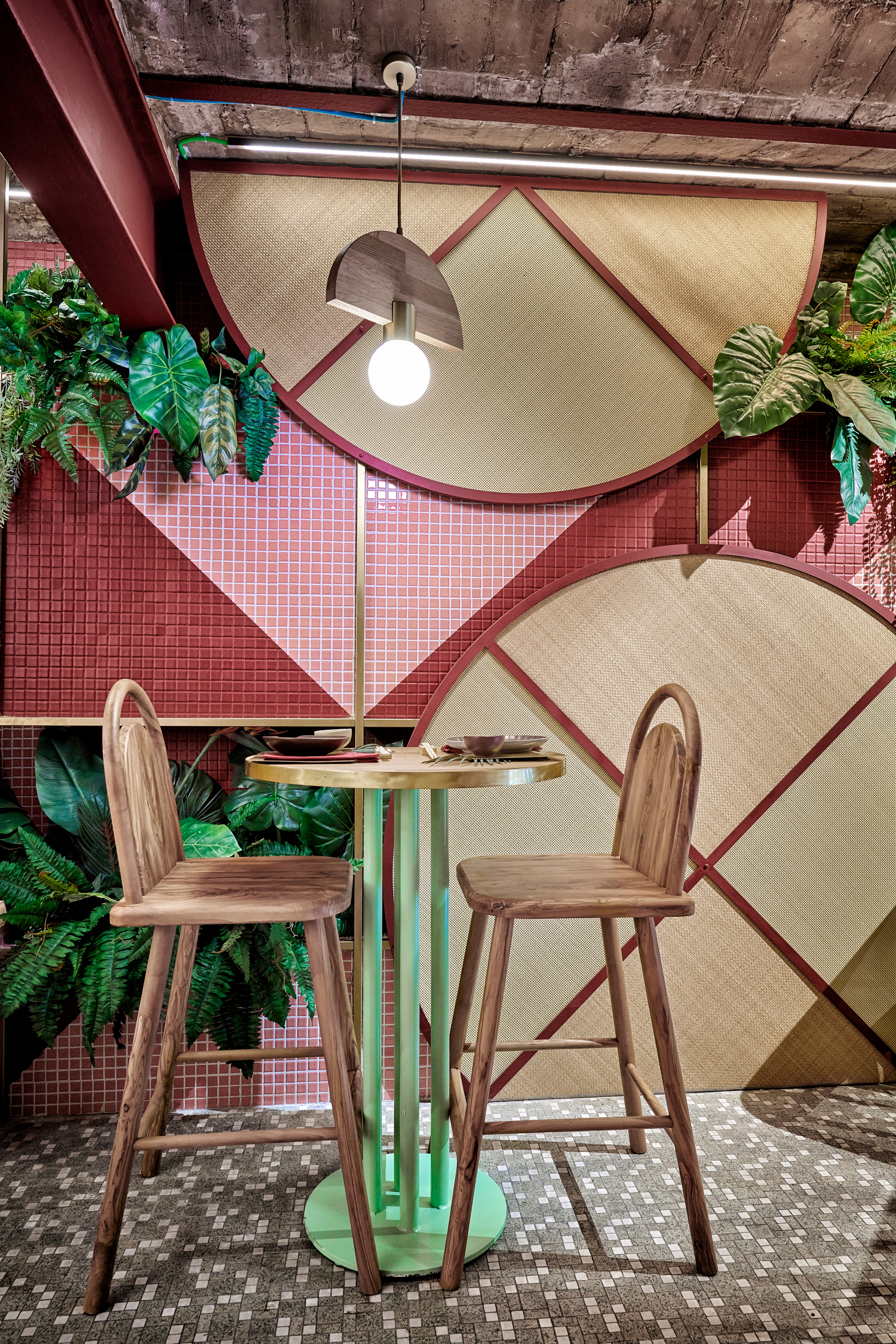
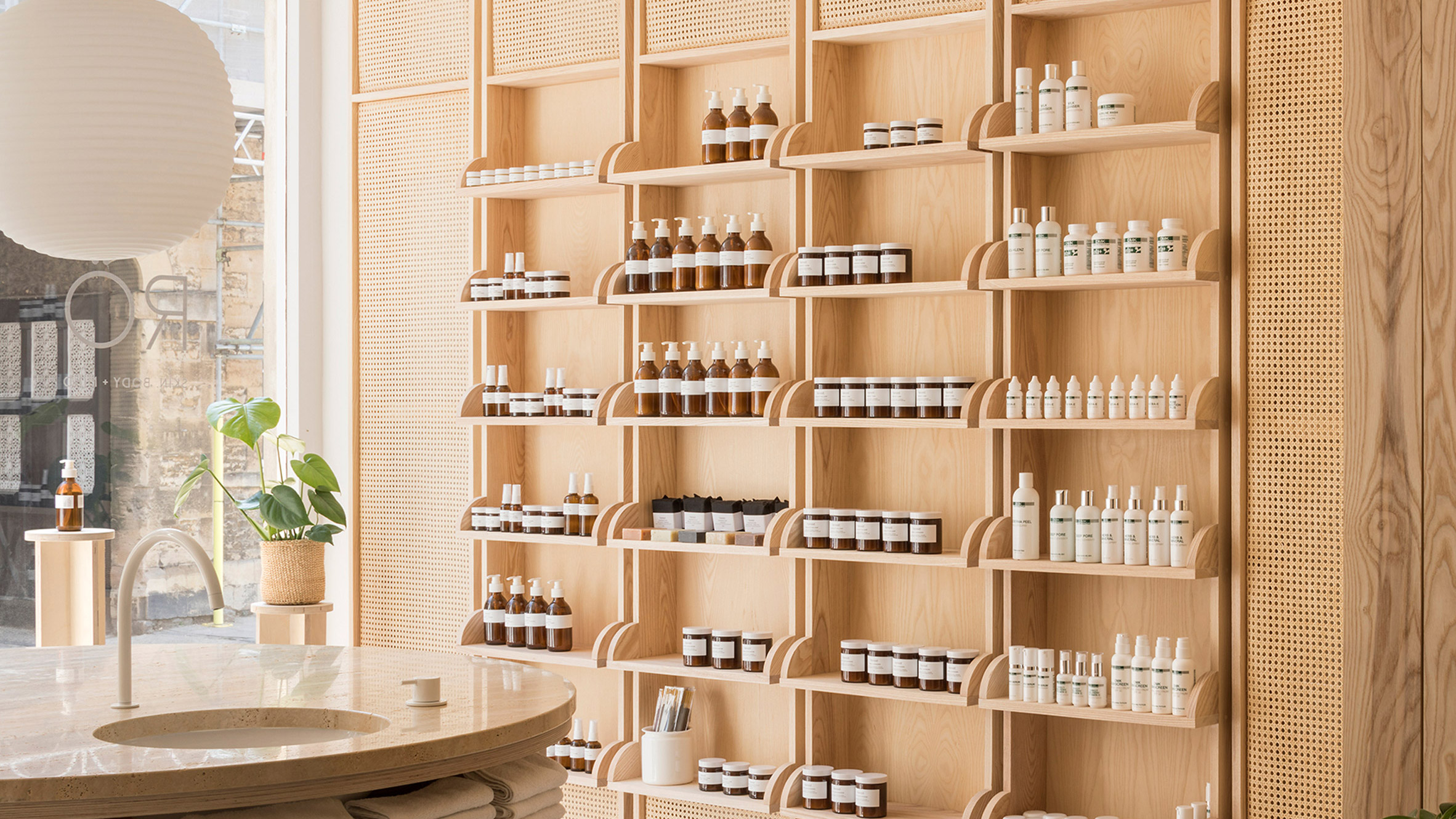
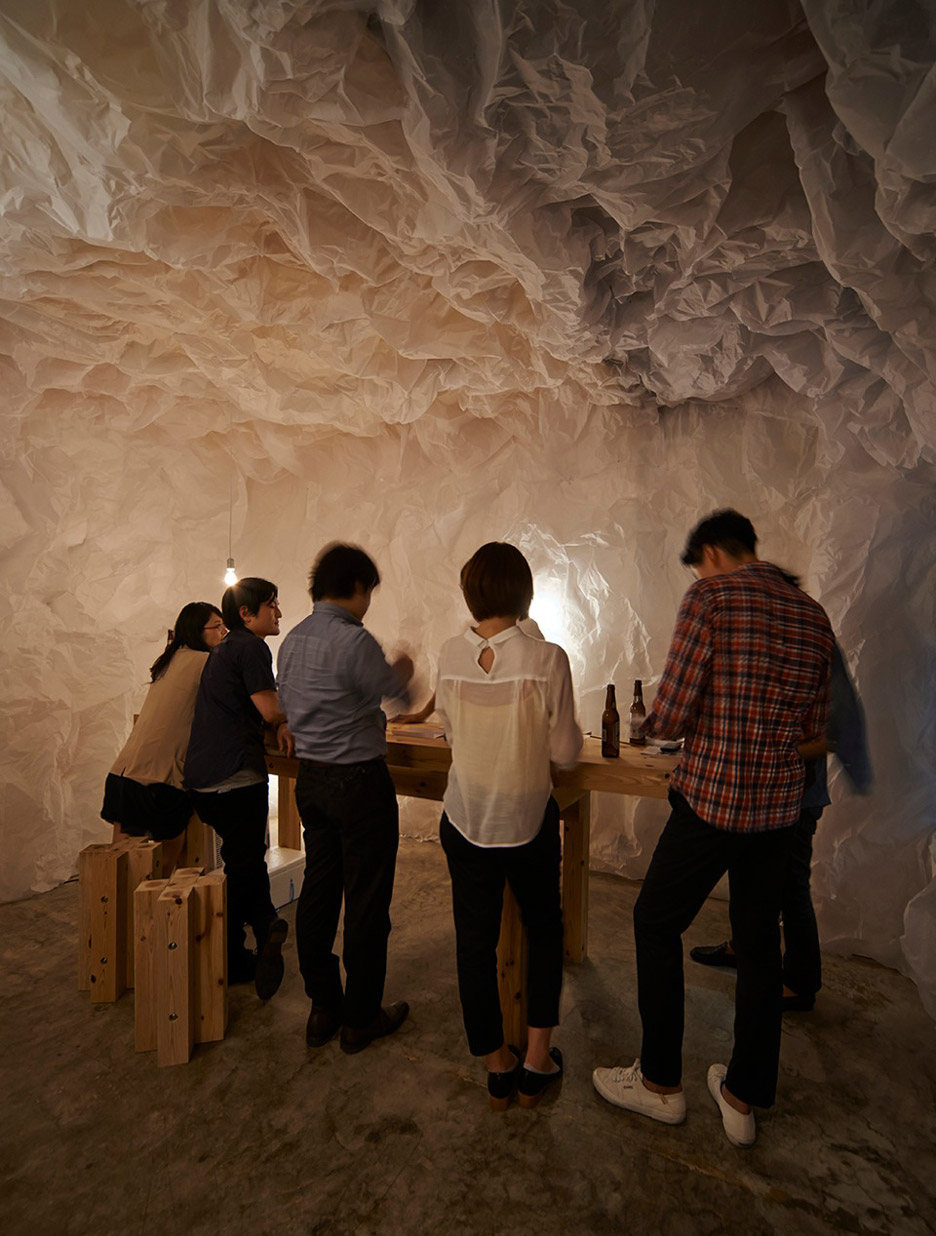
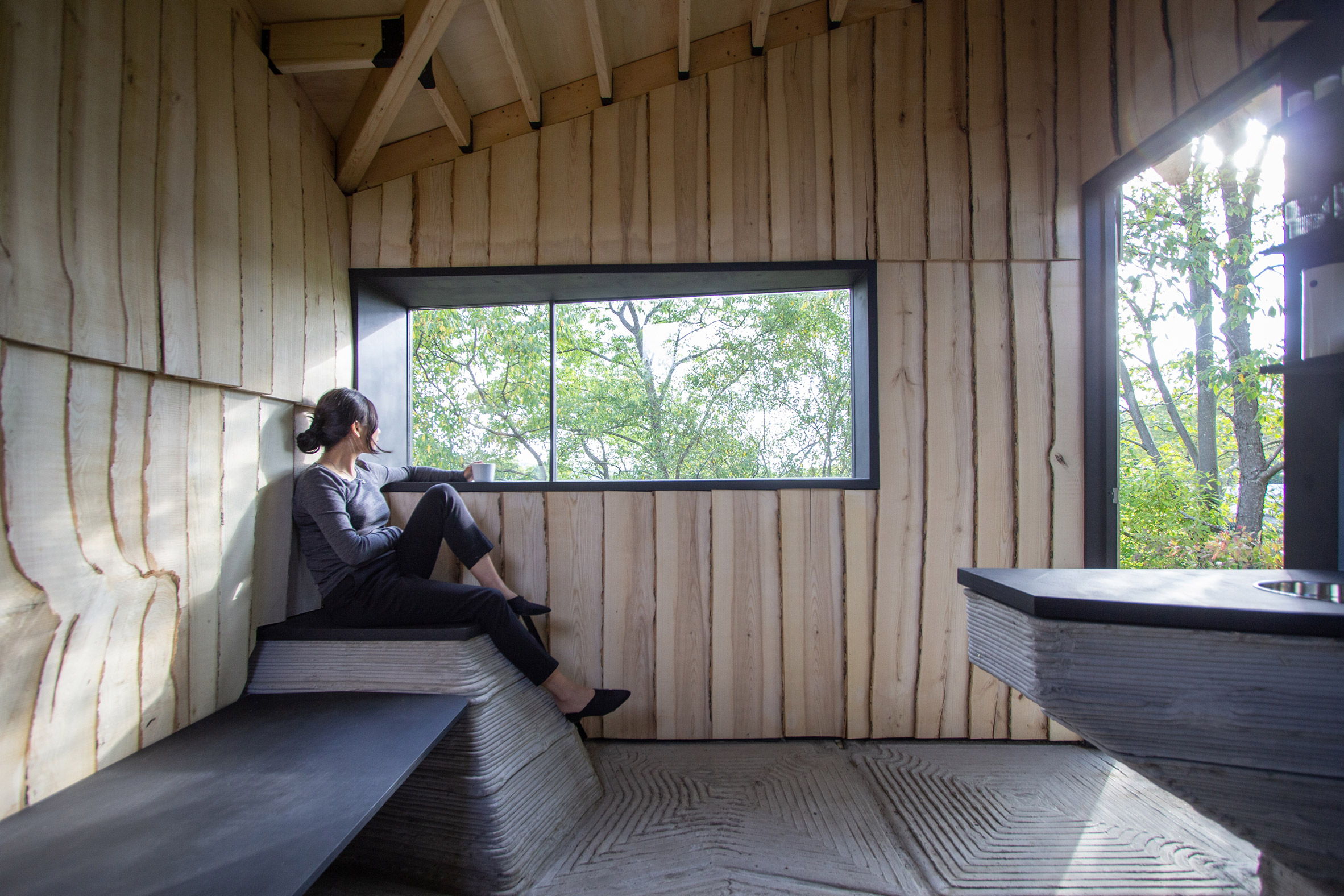
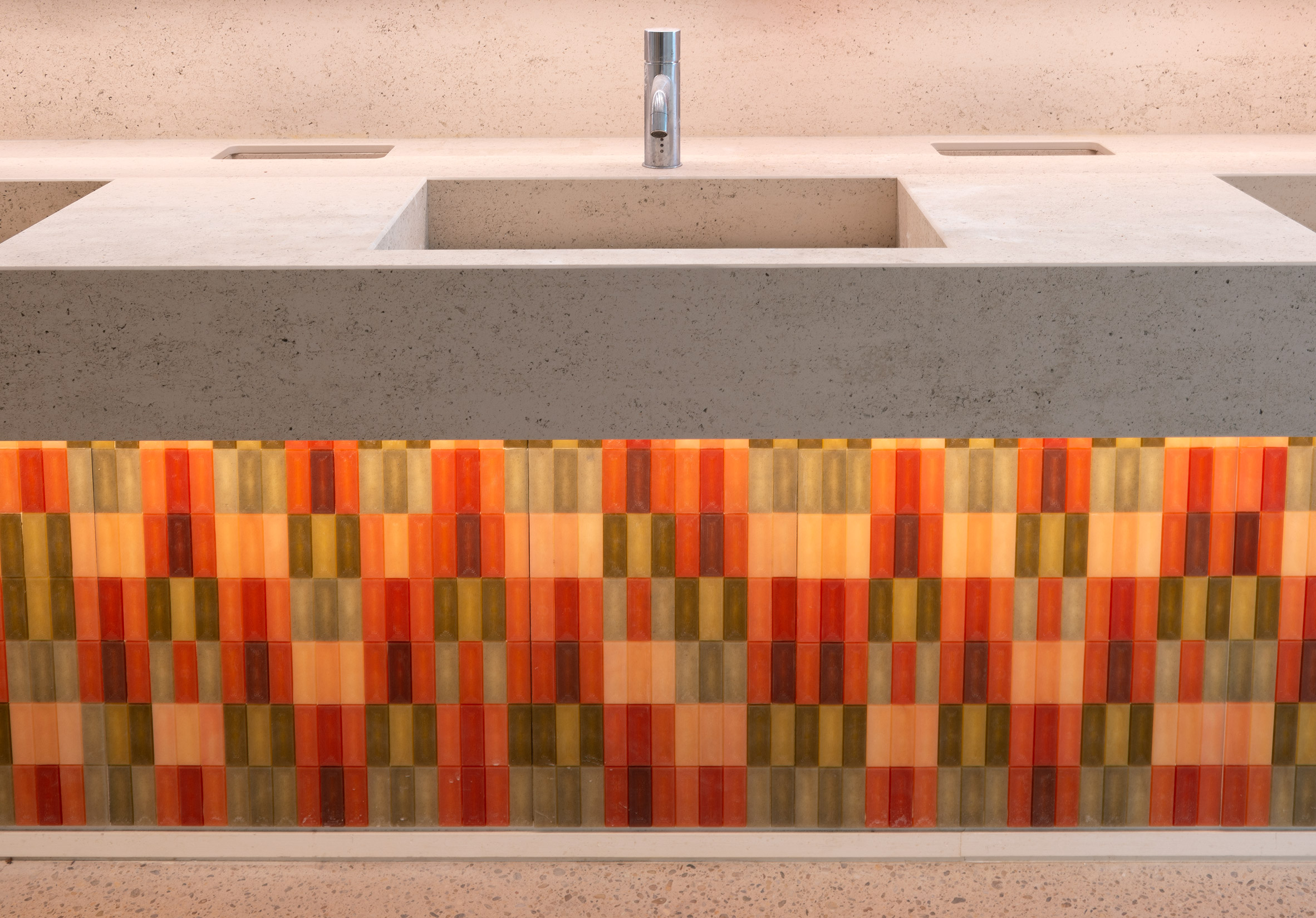
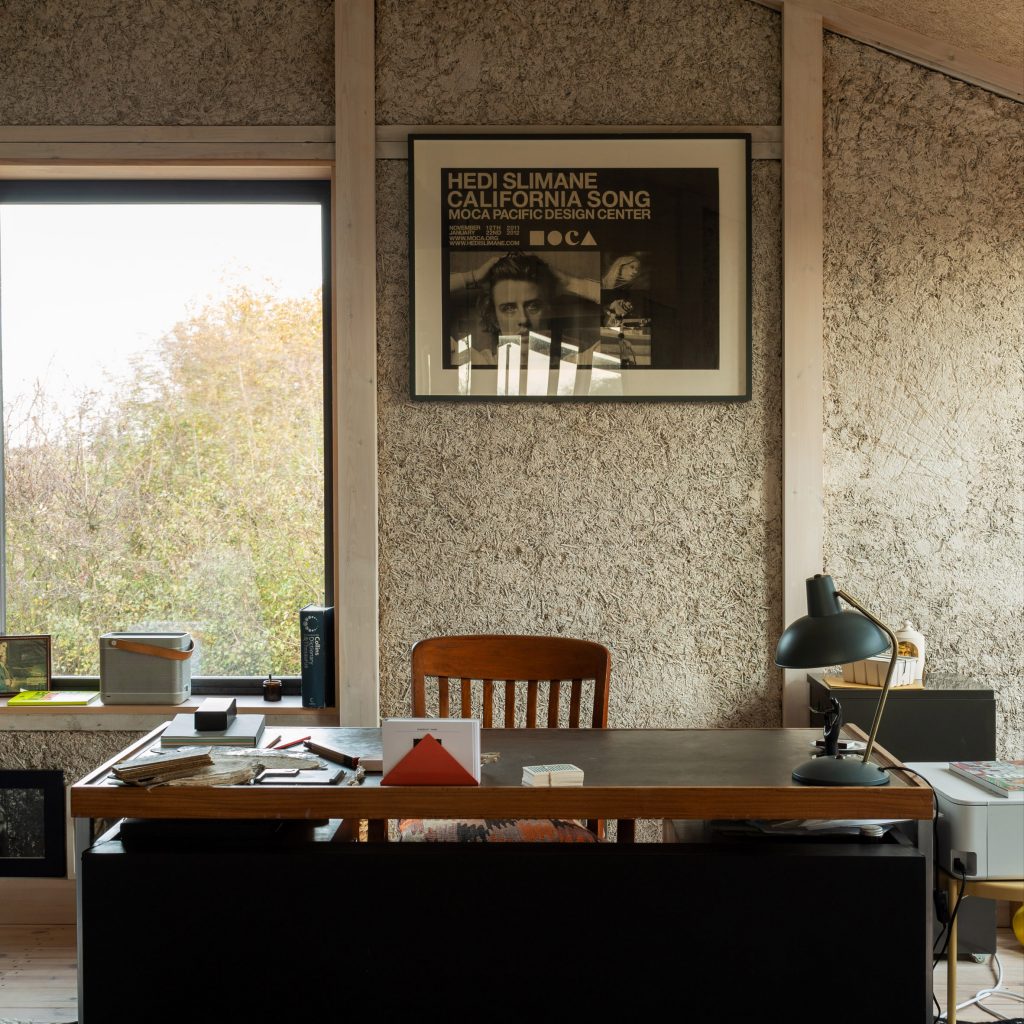
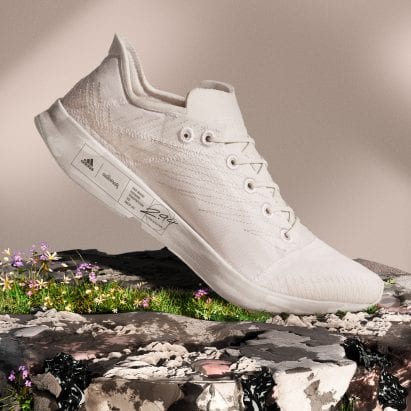
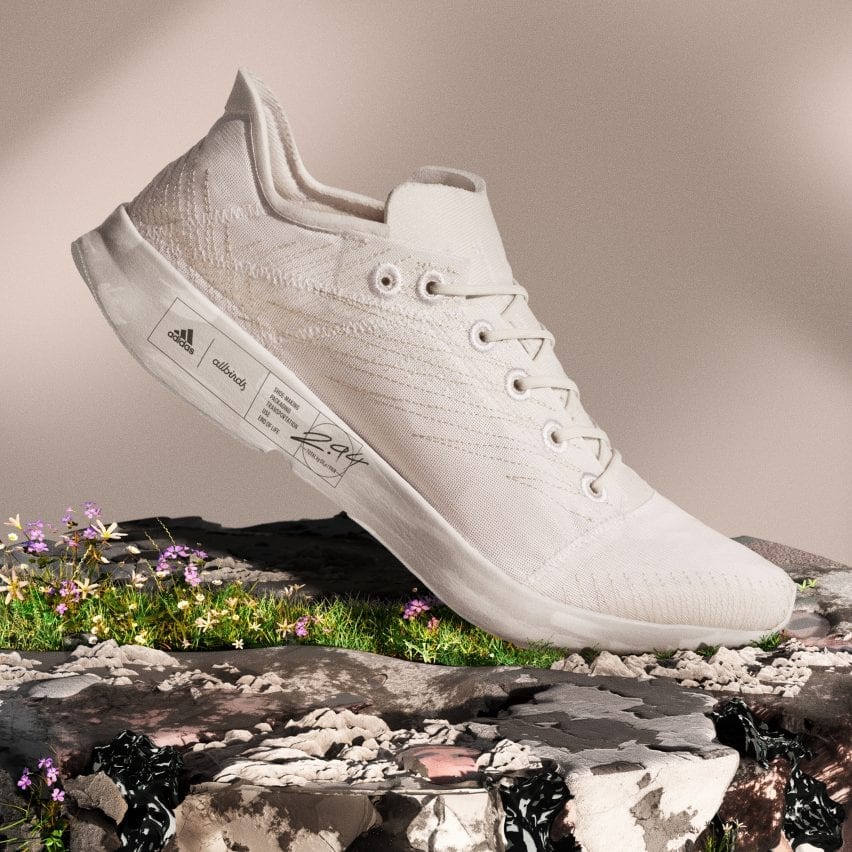
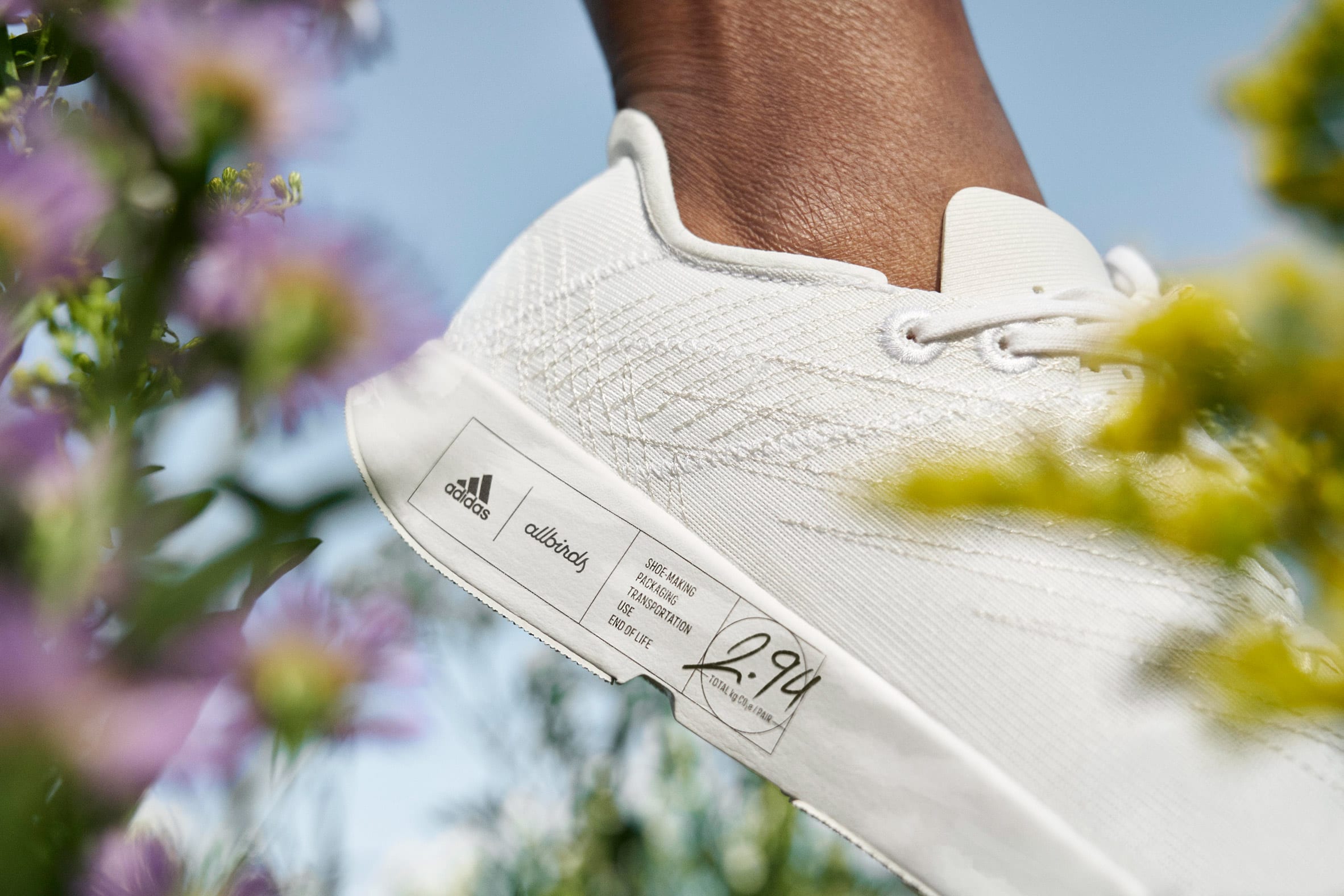 The carbon footprint of the Futurecraft.Footprint trainer (top) is labelled on its midsole (above)
The carbon footprint of the Futurecraft.Footprint trainer (top) is labelled on its midsole (above)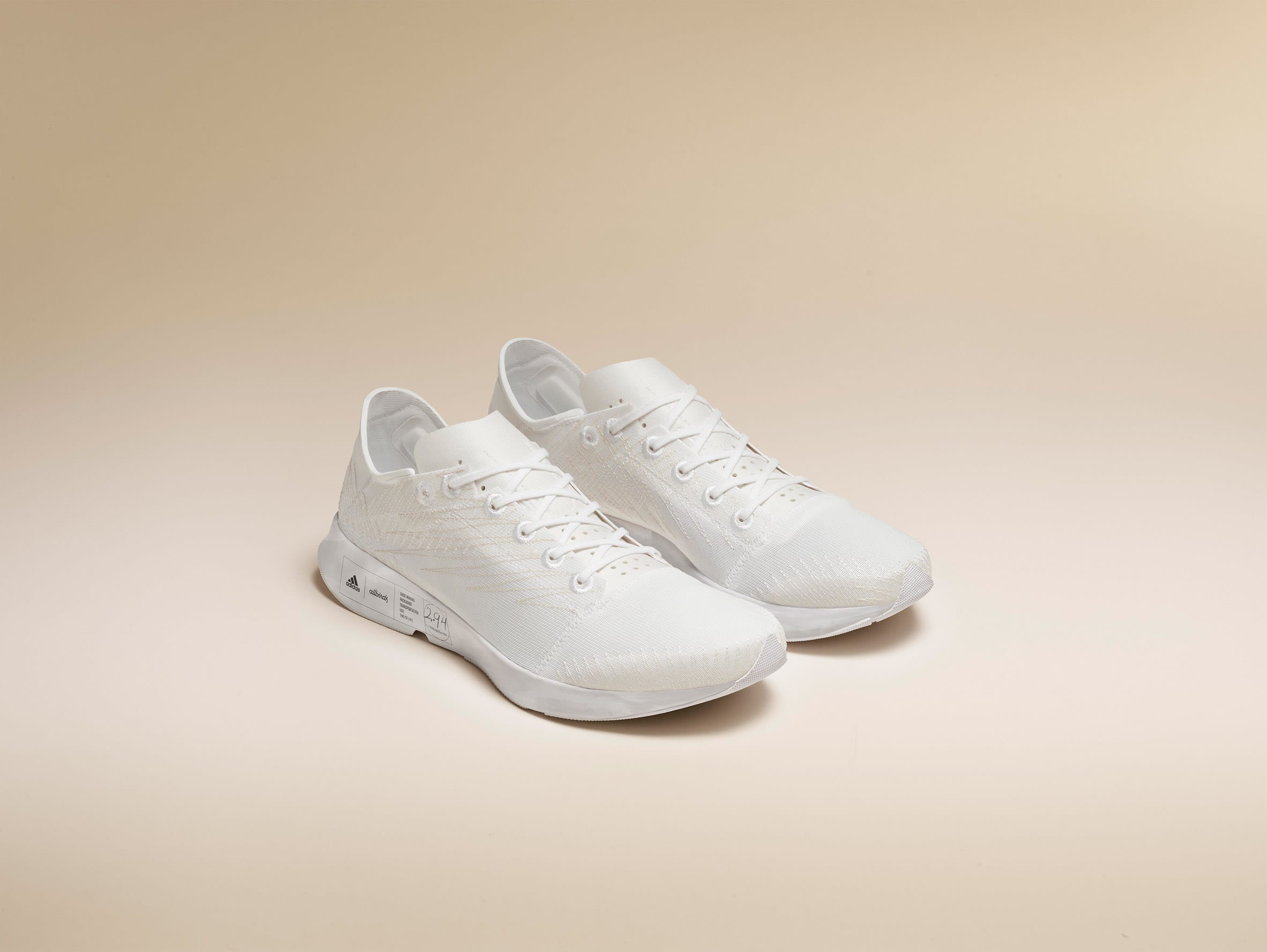 Created by Allbirds and Adidas, the trainers emit 2.94 kilograms of CO2e throughout their whole life
Created by Allbirds and Adidas, the trainers emit 2.94 kilograms of CO2e throughout their whole life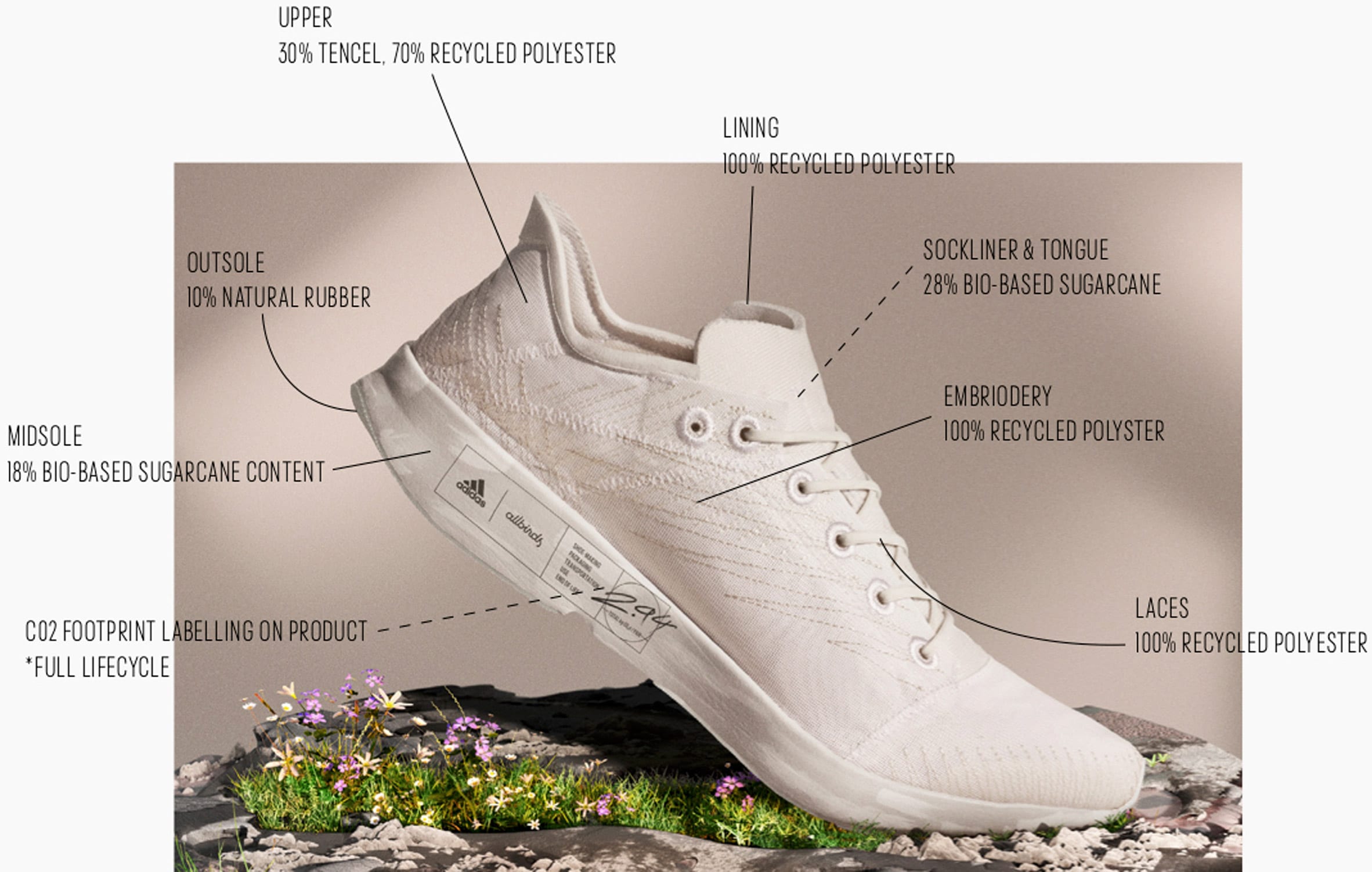 Parts of the shoe are constructed from recycled and plant-based materials
Parts of the shoe are constructed from recycled and plant-based materials

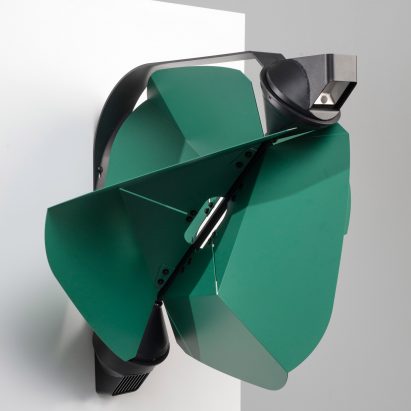
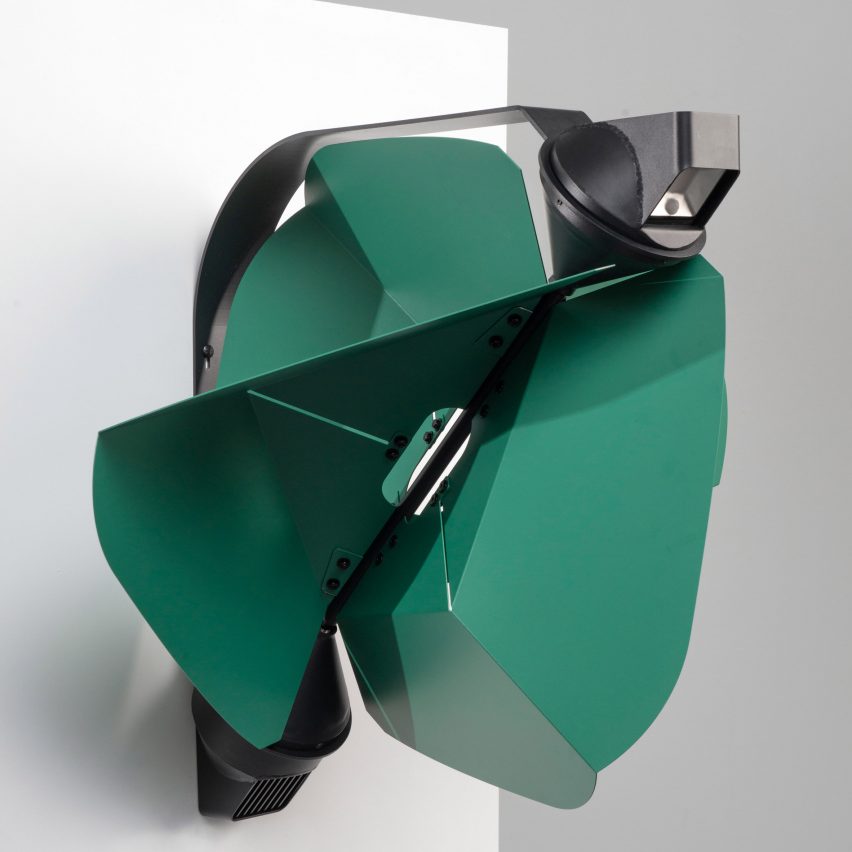
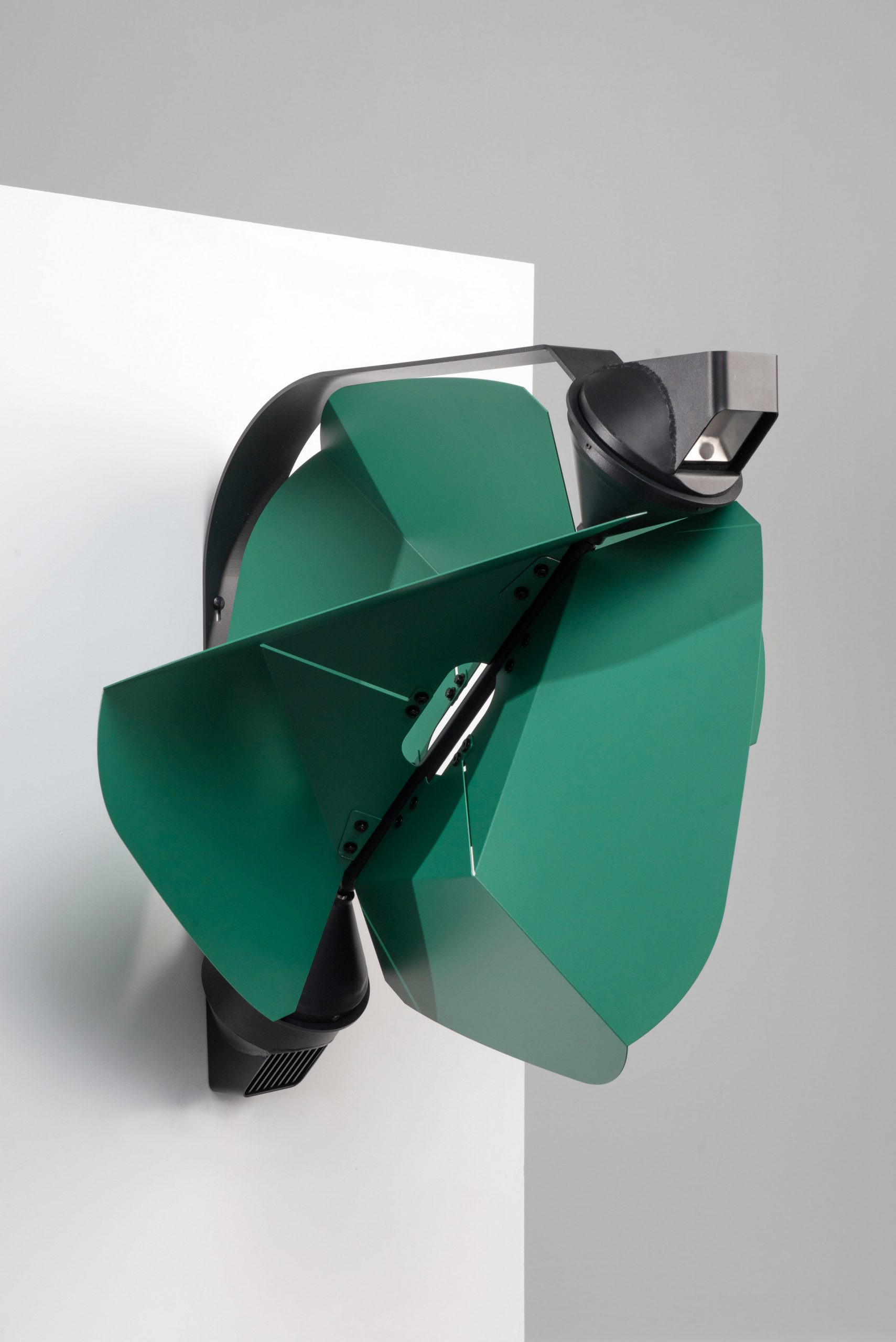 Above and top image: the Papilio light can be wall-mounted or freestanding
Above and top image: the Papilio light can be wall-mounted or freestanding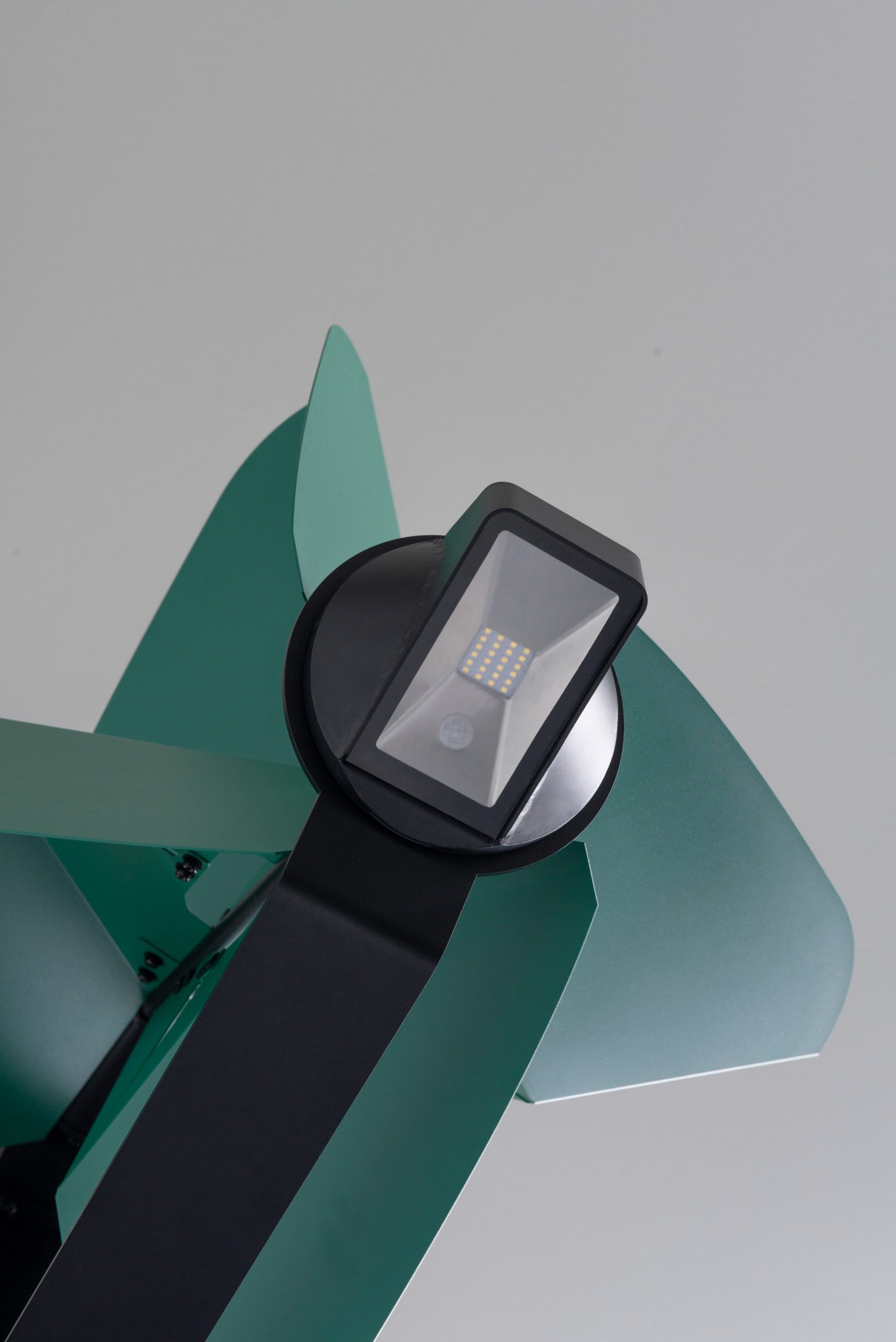 Its matt black body is designed to reflect as little light as possible
Its matt black body is designed to reflect as little light as possible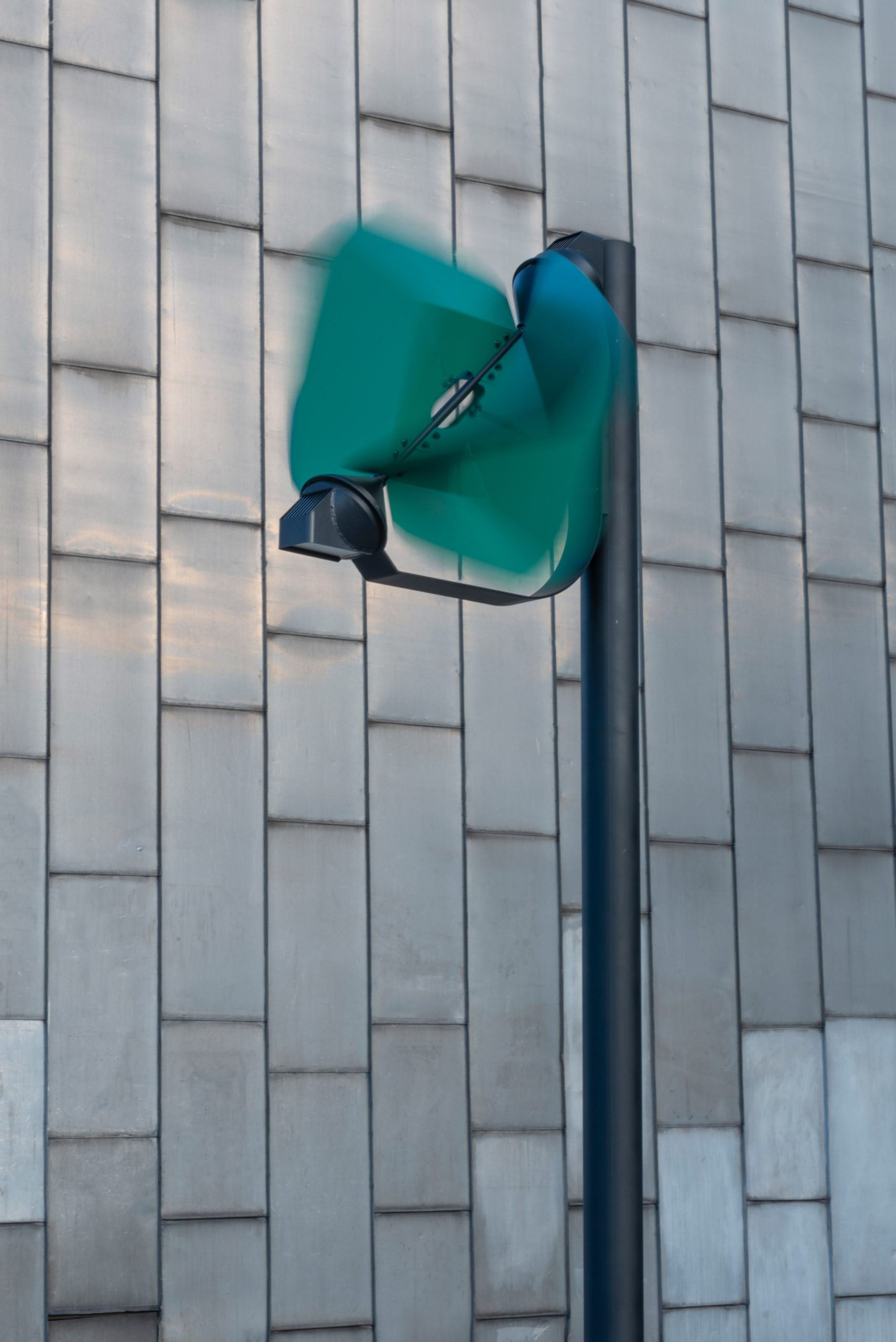 The turquoise wind turbine is propelled by urban airstreams
The turquoise wind turbine is propelled by urban airstreams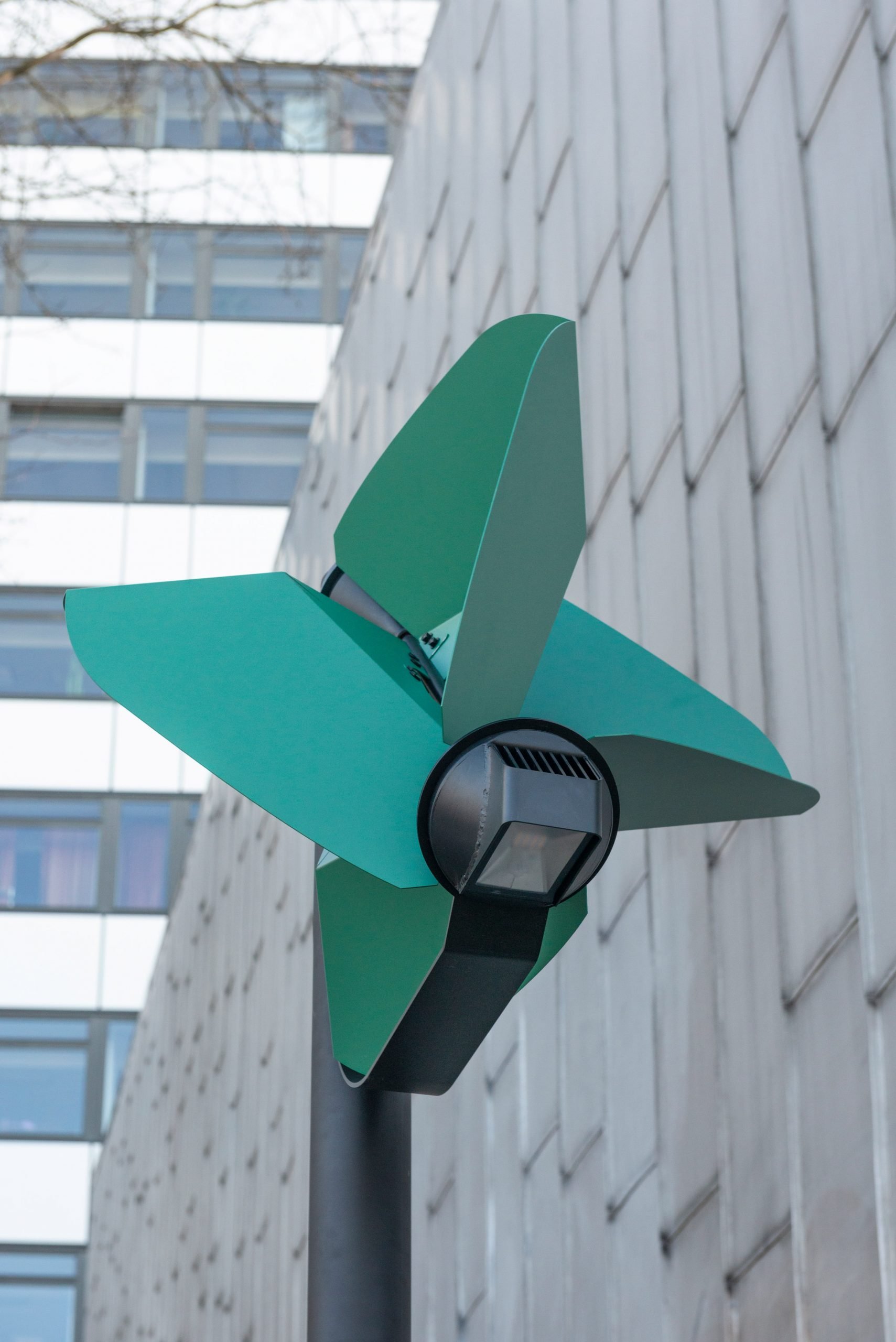 Its shape resembles a pinwheel
Its shape resembles a pinwheel Each turbine has four rotor blades made of folded sheet metal
Each turbine has four rotor blades made of folded sheet metal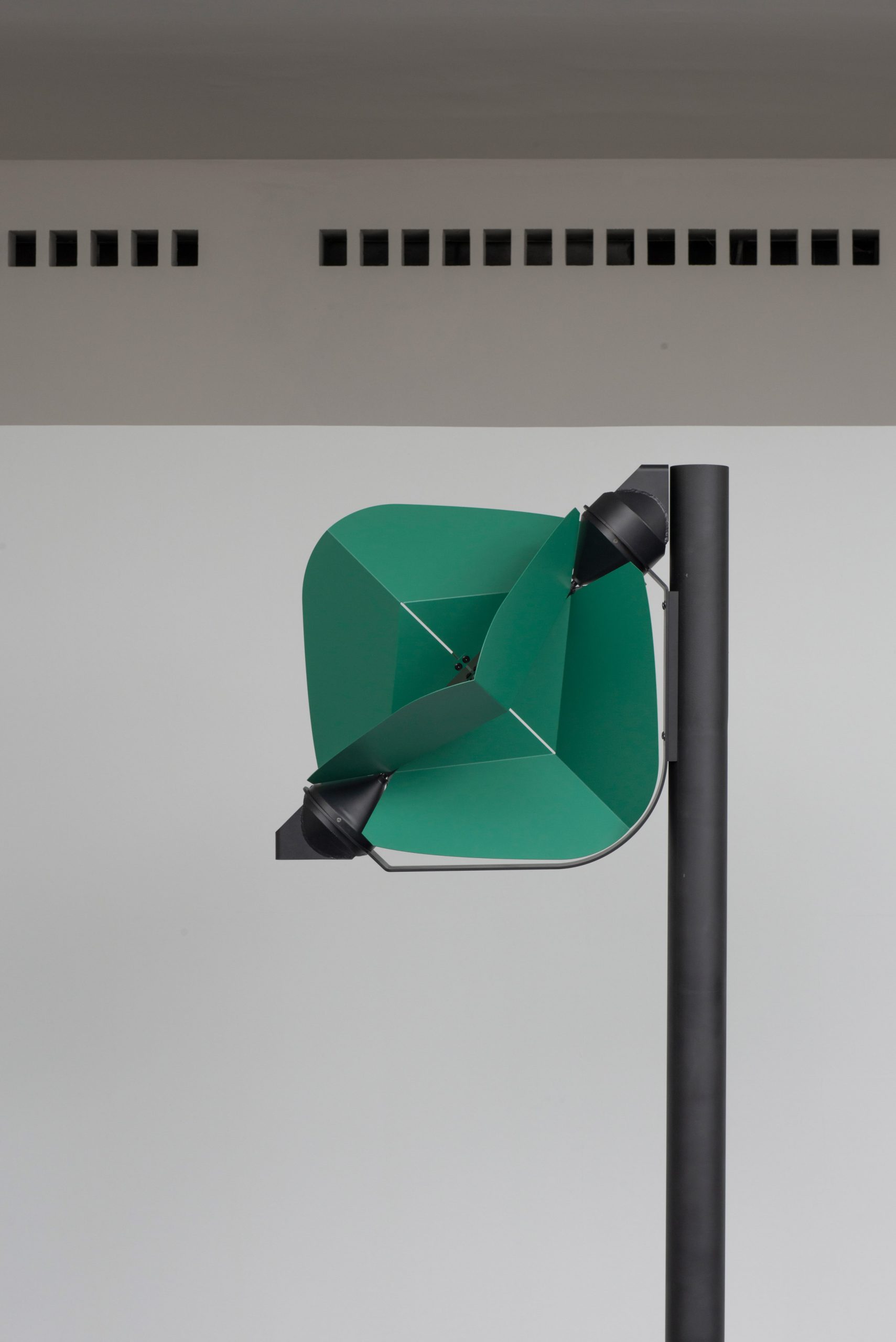 The light is a full cutoff fixture, meaning its head is pointed directly downward to minimise light pollution
The light is a full cutoff fixture, meaning its head is pointed directly downward to minimise light pollution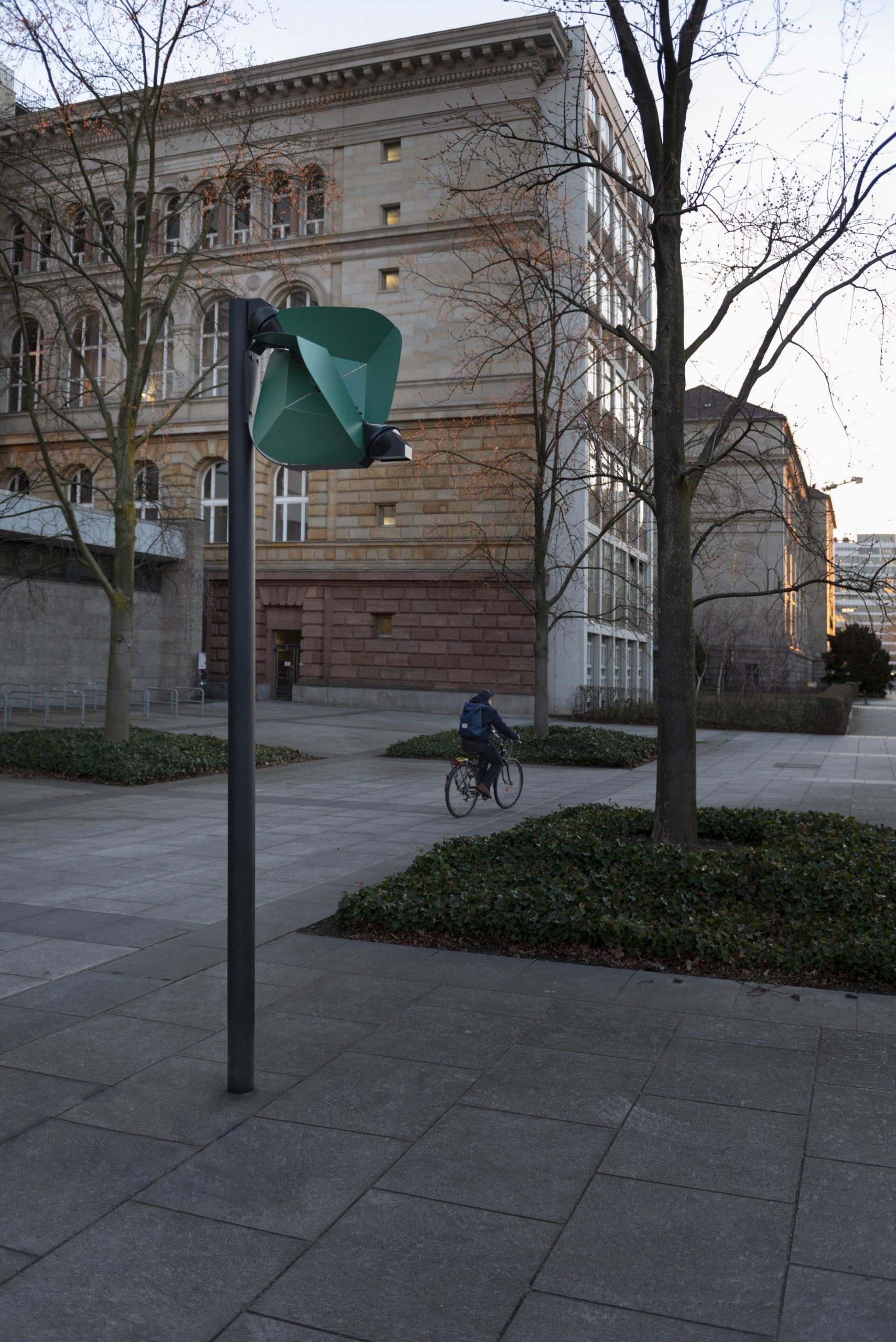 Trübenbacher tested the light in various locations in Berlin
Trübenbacher tested the light in various locations in Berlin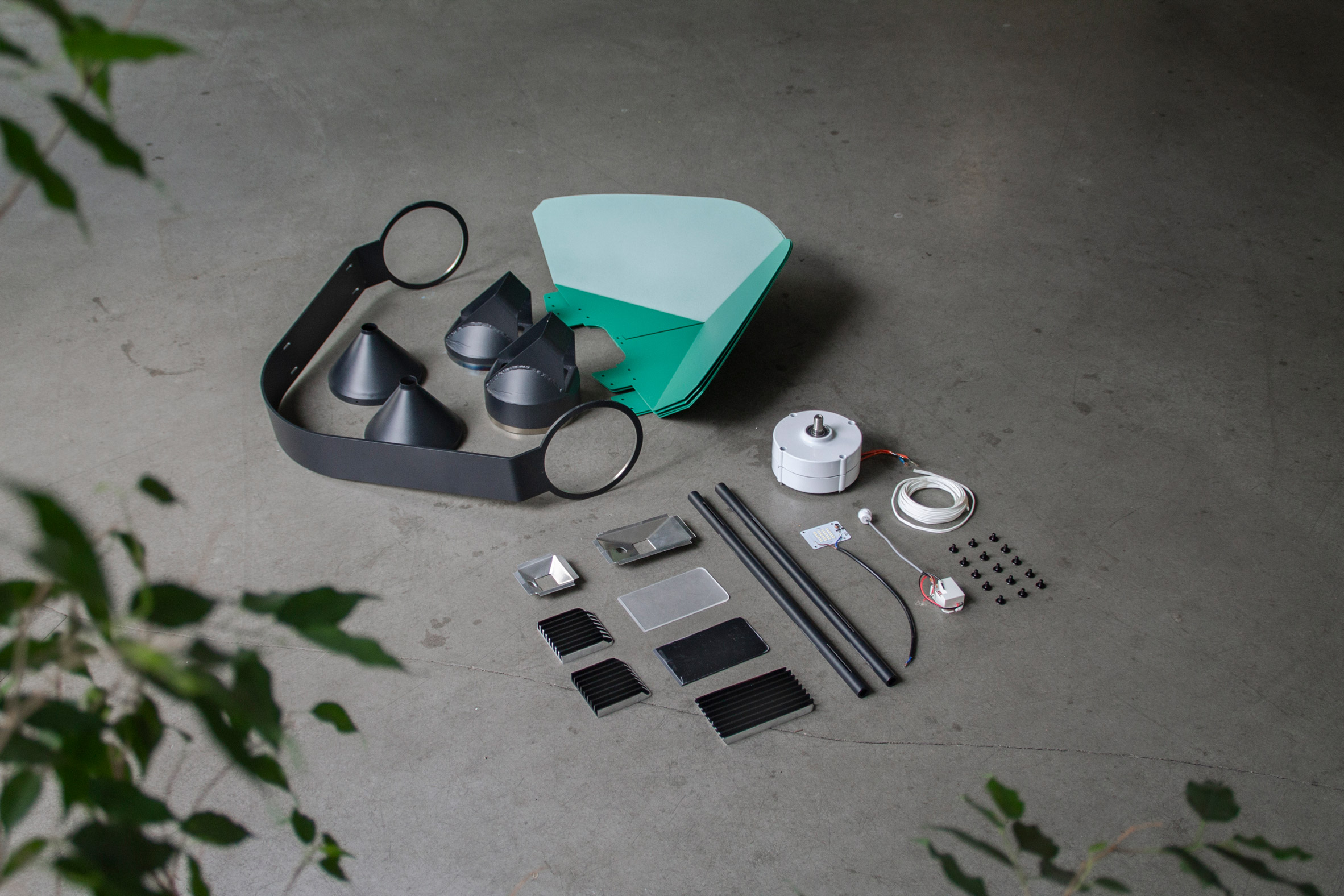 It can be assembled from simple components
It can be assembled from simple components